#Zendesk to Salesforce migration
Explore tagged Tumblr posts
Text
Seamless Zendesk to Salesforce Migration Services
Streamline your customer service operations with Zendesk to Salesforce migration solutions. Migrate supports data, tickets, and workflows securely and efficiently without disruption. Leverage expert support for a smooth transition that boosts productivity and improves customer experiences. Ensure data integrity and faster resolution cycles through a well-planned migration strategy. This service helps businesses make the most of Salesforce Service Cloud by replacing outdated systems with a powerful and scalable CRM platform.
0 notes
Text
Sheerbit: The Top VoIP Development Company for Custom, Scalable Solutions
Introduction
In today’s fast-paced digital landscape, clear and reliable communication is no longer a luxury—it’s a business imperative. Voice over Internet Protocol (VoIP) technology has revolutionized how organizations connect, collaborate, and serve their customers. However, not all VoIP development companies are created equal. Selecting the right partner can mean the difference between a smooth deployment and ongoing technical headaches. This is where Sheerbit shines. As a leading VoIP development company, Sheerbit combines deep technical expertise, bespoke solutions, and unwavering customer support to deliver communication platforms that scale with your business.
Understanding VoIP and Its Business Impact
VoIP enables voice calls, video conferences, and multimedia data to traverse IP networks rather than traditional telephone lines. This shift reduces costs, boosts flexibility, and integrates seamlessly with cloud-based and on-premise systems. Organizations that adopt VoIP enjoy features such as advanced call routing, click-to-dial, call analytics, and integration with CRM or helpdesk platforms—empowering teams to work smarter and respond faster to customer needs.
Common Challenges in VoIP Deployments
Even with compelling benefits, VoIP projects can falter if not handled by seasoned professionals. Organizations often face:
Quality of Service (QoS) issues that lead to dropped calls or latency
Security vulnerabilities exposing voice traffic to eavesdropping or fraud
Complex integrations with legacy PBX systems or third-party applications
Scalability hurdles when call volume spikes or new offices come online
Ongoing maintenance and lackluster support after go-live
Addressing these challenges demands a partner who understands both the networking fundamentals and the unique needs of your business.
Why Sheerbit Stands Out
Sheerbit has built its reputation as the best VoIP development company by focusing on three core pillars: technical excellence, client-centric customization, and comprehensive support.
1. Technical Excellence
Every Sheerbit engineer brings extensive experience with leading VoIP platforms—Asterisk, FreeSWITCH, OpenSIPS, Kamailio, and WebRTC frameworks. Whether you need a robust SIP trunking solution or a cutting-edge WebRTC application, Sheerbit’s team writes clean, scalable code and adheres to industry best practices for network performance and reliability.
2. Custom VoIP Solutions
Off-the-shelf VoIP packages rarely fit every business scenario. Sheerbit specializes in tailor-made development services, from crafting custom dial plans and interactive voice response (IVR) systems to integrating advanced call-center features like predictive routing and real-time analytics. With Sheerbit, you can hire VoIP developers dedicated to understanding your workflows and delivering solutions that align perfectly with your objectives.
3. End-to-End Support
The deployment of a VoIP system is just the beginning. Sheerbit offers full-lifecycle services: consulting and needs assessment, architecture design, development, testing, deployment, and post-launch maintenance. Their DevOps-driven processes ensure seamless updates, continuous monitoring, and rapid resolution of any issues—minimizing downtime and safeguarding call quality.
Key Service Offerings
VoIP Development Services: Sheerbit engineers build feature-rich VoIP applications, including softphones, mobile VoIP apps, and web-based conferencing tools. They ensure interoperability across devices and browsers, delivering user experiences that mirror or exceed traditional phone systems.
Custom Integrations: Leverage your existing investments by integrating VoIP with CRMs like Salesforce or HubSpot, helpdesk platforms such as Zendesk, or bespoke databases. Sheerbit’s APIs and middleware ensure call data syncs accurately with your business systems.
SIP Trunking & PBX Migration: Whether you’re migrating from a legacy PBX to a modern SIP-based infrastructure or establishing new SIP trunks for international call routing, Sheerbit’s proven migration framework guarantees minimal service interruption.
Security & Compliance: Voice services must be secure. Sheerbit implements TLS/SRTP encryption, robust firewall configurations, and fraud-detection modules. They also assist with regulatory compliance (e.g., GDPR, HIPAA) to protect sensitive communications.
Success Stories
Global Retail Chain Enhances Customer Support A multinational retailer struggling with call center overload engaged Sheerbit to deploy a scalable Asterisk-based IVR with predictive call routing. Post-launch, average wait times dropped by 40%, and customer satisfaction scores rose significantly.
Healthcare Provider Integrates VoIP with EHR Sheerbit developed a HIPAA-compliant FreeSWITCH solution for a healthcare network, integrating audible call prompts directly into the electronic health record system. Clinicians saved an average of 10 minutes per patient, boosting operational efficiency.
How to Hire Sheerbit’s VoIP Developers
Engaging with Sheerbit is straightforward. After an initial consultation to assess your needs, you’ll receive a detailed proposal outlining scope, timelines, and pricing. You can choose to hire VoIP developers on a project basis or onboard them as part of your extended team. Flexible engagement models include fixed-price projects, time-and-materials contracts, or dedicated-team arrangements.
Pricing & Engagement Models
Sheerbit offers transparent, competitive pricing tailored to project complexity and resource requirements. Typical engagement tiers include:
Standard Package: Core VoIP deployment with essential features
Advanced Package: Custom development, integrations, and analytics
Enterprise Package: Full-scale solutions with ongoing support and SLAs
The Implementation Process
Discovery & Planning: Define objectives, technical requirements, and success metrics.
Design & Architecture: Create network diagrams, call-flow maps, and infrastructure plans.
Development & Testing: Build features in agile sprints, perform comprehensive QA, and conduct pilot testing.
Deployment & Training: Roll out the solution, configure networks, and train your IT staff and end users.
Support & Optimization: Provide 24/7 monitoring, periodic performance reviews, and iterative enhancements.
Conclusion & Call to Action
Selecting the best VoIP development company can transform your organization’s communications, delivering cost savings, operational agility, and superior customer experiences. With Sheerbit’s proven expertise in custom VoIP solutions, end-to-end support, and dedication to quality, your business is poised for seamless, future-ready communications.
Ready to elevate your voice infrastructure? Contact Sheerbit today to schedule a free consultation and discover how you can harness the power of a tailored VoIP solution built by industry experts.
0 notes
Text
How U.S. Startups Are Leveraging Free CRM Tools to Drive Customer Engagement Without Breaking the Bank?

Free CRM tools have been a necessity for large-scale companies. Improving sales, bringing in higher customer engagement rates, & escalating growth are some of the crucial components of it. For the startups, every minute & every investment counts. Tools to keep track of the growing number of contacts, nurture leads, & track customer interactions are imperative. These free CRM tools are also used in identifying target audiences and launching marketing campaigns.
The Democratization of CRM
Customer Relationship Management (CRM) software has traditionally been the domain of large enterprises with the budgets to match. However, in recent years, platforms offering free CRM tools have democratized access to these once-exclusive systems. Companies like HubSpot, Zoho, Bitrix24, and Freshsales now offer robust free tiers that provide startups with everything from contact management and sales tracking to automated email marketing and analytics.
According to Grand View Research, the global CRM market was valued at $58.82 billion in 2022 and is expected to expand at a CAGR of 13.9% from 2023 to 2030. While a sizable portion of this market still includes enterprise-grade solutions, a growing number of startups are gravitating toward free offerings as a viable entry point.
Cost-Efficiency Meets Functionality

For cash-strapped startups, free CRM tools offer a way to stay organized and competitive. Most of these tools now come with features that were once only available in paid versions: lead scoring, sales funnel visualization, customer segmentation, and task automation. The value proposition is simple yet powerful—do more with less.
Take, for instance, HubSpot's free CRM. It offers unlimited users, 1 million contacts, and integrations with platforms like Gmail, Outlook, and Slack. This means that small teams can execute complex marketing and sales campaigns without investing in expensive software licenses.
Boosting Customer Engagement from Day One
Startups thrive on agility and innovation. Free CRM tools enhance both by streamlining communication, automating follow-ups, and enabling real-time tracking of customer interactions. This agility allows startups to craft personalized experiences that nurture leads and build loyalty from the get-go.
In a survey conducted by Salesforce, 84% of customers stated that being treated like a person, not a number, is critical to winning their business. CRM systems, even the free versions, empower startups to achieve that level of personalization without requiring a large sales team or a hefty tech stack.
Scalability for Growing Needs

One of the key concerns with free CRM tools is whether they can scale as the business grows. The good news? Most of these platforms offer seamless upgrade paths. As a startup's customer base expands and their operational complexity increases, they can transition to paid plans without migrating to a new system—ensuring continuity and reducing friction.
For example, Zoho CRM allows startups to move from a free version to its standard, professional, or enterprise tiers depending on business needs. This modularity is essential for startups aiming to future-proof their operations.
Integration with Existing Workflows
Modern free CRM tools are built to integrate with a broad array of existing applications. Whether it's syncing with e-commerce platforms like Shopify, customer support solutions like Zendesk, or project management tools like Trello, the ease of integration means startups can unify their operations within a single ecosystem.
Such integrations not only save time but also ensure that data is consistently updated across platforms, reducing errors and increasing overall efficiency. For startups juggling multiple roles and responsibilities, this can be a major asset.
Data-Driven Decision Making
In today’s digital economy, data is the currency of smart decision-making. Free CRM tools provide startups with the analytics they need to track customer behavior, identify sales bottlenecks, and fine-tune marketing strategies. Dashboards and visual reports help founders and managers make data-backed decisions without needing a dedicated analyst team.
A 2023 report by Statista revealed that 62% of U.S. businesses that use CRM tools experienced improved customer retention. This underscores the value of having data-centric systems in place—even more so when those systems are accessible at zero cost.
Community and Support Resources

Another often-overlooked advantage of using popular free CRM tools is the access to vibrant user communities and extensive support documentation. Startups can tap into forums, webinars, and how-to guides to troubleshoot issues or optimize workflows, reducing their dependence on external consultants.
In some cases, these communities even drive innovation, with users sharing hacks and workarounds that extend the functionality of the tools.
Challenges and Considerations
Of course, free CRM tools come with trade-offs. Limited features, user caps, and branding restrictions can hinder growth if not anticipated. Startups need to assess whether a tool aligns with their short-term needs and long-term vision. Data security and compliance should also be top-of-mind, especially when handling sensitive customer information.
To mitigate risks, many startups adopt a hybrid approach—leveraging free CRM functionalities while integrating them with niche paid tools to cover any gaps.
Conclusion:
For U.S.-based startups aiming to scale customer engagement without incurring massive costs, free CRM tools are proving to be an indispensable asset. They offer functionality, flexibility, and scalability—critical elements for any growing business.
In a time when agility and resourcefulness define success, leveraging free CRM tools isn’t just a budget-friendly move—it’s a strategic one. By harnessing the capabilities of these platforms, startups can build robust customer relationships, make smarter decisions, and compete more effectively in crowded markets.
As digital transformation continues to reshape the startup ecosystem, the role of free CRM tools will only become more integral. For savvy founders and C-suite leaders, now is the time to embrace these tools as foundational pillars of modern business growth.
Uncover the latest trends and insights with our articles on Visionary Vogues
0 notes
Text
Customer Engagement Solutions Market Investment Analysis: Opportunities and Challenges 2032
Customer Engagement Solutions Market was valued at USD 21.2 billion in 2023 and is expected to reach USD 53.3 Billion by 2032, growing at a CAGR of 10.79% from 2024-2032
Customer Engagement Solutions Market is experiencing rapid growth as businesses prioritize personalized interactions to enhance customer satisfaction. Companies across various industries are leveraging AI, automation, and data analytics to improve engagement strategies. The rising demand for omnichannel communication and real-time customer support is further driving market expansion.
Customer Engagement Solutions Market continues to evolve with advancements in digital technologies. Organizations are shifting from traditional engagement models to AI-driven chatbots, predictive analytics, and personalized experiences. Businesses are investing in cloud-based engagement platforms to streamline customer interactions and boost brand loyalty, leading to a surge in market demand.
Get Sample Copy of This Report: https://www.snsinsider.com/sample-request/3745
Market Keyplayers:
Salesforce - Salesforce.com, Inc.
Microsoft - Microsoft Corporation
Oracle - Oracle Corporation
SAP - SAP SE
Adobe - Adobe Inc.
Zendesk - Zendesk, Inc.
HubSpot - HubSpot, Inc.
Zoho Corporation - Zoho Corporation Pvt. Ltd.
Freshworks - Freshworks Inc.
Genesys - Genesys Telecommunications Laboratories, Inc.
Pegasystems - Pegasystems Inc.
Verint Systems - Verint Systems Inc.
NICE Systems - NICE Ltd.
Twilio - Twilio Inc.
Qualtrics - Qualtrics International Inc.
Sprinklr - Sprinklr, Inc.
Khoros - Khoros, LLC
Medallia - Medallia, Inc.
Infobip - Infobip Ltd.
Cognigy - Cognigy GmbH
Market Trends Driving Growth
1. AI-Powered Customer Interactions
Artificial Intelligence (AI) is revolutionizing customer engagement by enabling chatbots, virtual assistants, and predictive analytics. These AI-driven tools help businesses provide instant responses, resolve customer queries efficiently, and offer tailored recommendations.
2. Omnichannel Engagement Strategies
Consumers now expect seamless interactions across multiple platforms, including mobile apps, social media, email, and live chat. Businesses are implementing omnichannel strategies to ensure a consistent and personalized customer experience, regardless of the communication channel.
3. Automation and Self-Service Solutions
Automation is playing a crucial role in enhancing customer engagement. Self-service portals, automated workflows, and AI-powered customer support systems are reducing response times while improving overall efficiency.
4. Cloud-Based Customer Engagement Platforms
With the increasing adoption of cloud computing, businesses are migrating to cloud-based customer engagement platforms. These solutions offer scalability, flexibility, and real-time data analysis, helping organizations enhance customer interactions without significant infrastructure costs.
5. Data-Driven Personalization
Businesses are leveraging big data and AI to analyze customer preferences, behaviors, and past interactions. This enables companies to deliver highly personalized recommendations, targeted marketing campaigns, and customized customer experiences.
Enquiry of This Report: https://www.snsinsider.com/enquiry/3745
Market Segmentation:
By Component
Solution
Analytics & Reporting
Omnichannel
Robotic Process Optimization
Self-service
Workforce optimization
Services
Integration & deployment
Support & maintenance
Training & consulting
By Deployment
Hosted
On-Premise
By Organization Size
SMEs
Large enterprises
By End- Use
BFSI
Retail & consumer goods
Healthcare
IT & telecom
Government, energy & utilities
Manufacturing
Travel & hospitality
Market Analysis and Current Landscape
Key factors influencing market growth include:
Rising digital transformation initiatives: Businesses are integrating AI-driven engagement tools into their customer service models.
Increasing customer expectations: Consumers demand instant, personalized interactions with brands across various digital channels.
Growing adoption of self-service solutions: Organizations are deploying chatbots and AI-driven virtual assistants to enhance engagement.
Expanding use of big data and analytics: Companies are using customer insights to optimize engagement strategies and improve retention.
Despite its strong growth, the market faces challenges such as data security concerns, integration complexities, and the need for skilled professionals. However, businesses are addressing these challenges through advanced encryption, API integrations, and AI-powered automation.
Future Prospects: What Lies Ahead?
1. Expansion of AI and Machine Learning in Engagement Solutions
AI and machine learning will continue to drive innovation in customer engagement, with smarter chatbots, AI-driven sentiment analysis, and automated decision-making processes enhancing customer interactions.
2. Hyper-Personalized Customer Experiences
The future of customer engagement lies in hyper-personalization, where AI-powered tools analyze individual customer behavior and preferences to offer tailored experiences in real time.
3. Integration of Voice and Conversational AI
Voice assistants and AI-powered conversational interfaces are set to become mainstream in customer engagement, allowing seamless voice-based interactions and enhancing user convenience.
4. Blockchain for Secure Customer Data Management
As data privacy regulations become stricter, blockchain technology is expected to play a significant role in securing customer data, ensuring transparency, and building customer trust.
5. Evolution of Real-Time Customer Feedback and Sentiment Analysis
Companies will increasingly adopt real-time feedback tools and sentiment analysis to understand customer emotions and enhance engagement strategies dynamically.
Access Complete Report: https://www.snsinsider.com/reports/customer-engagement-solutions-market-3745
Conclusion
The Customer Engagement Solutions Market is experiencing rapid transformation, driven by AI, automation, and data-driven personalization. As businesses continue to prioritize customer experience, investments in engagement technologies will rise. Companies that leverage AI-powered tools, omnichannel strategies, and personalized engagement methods will gain a competitive edge. The future of customer engagement promises to be more intelligent, efficient, and customer-centric, reshaping the way brands interact with their audiences.
About Us:
SNS Insider is one of the leading market research and consulting agencies that dominates the market research industry globally. Our company's aim is to give clients the knowledge they require in order to function in changing circumstances. In order to give you current, accurate market data, consumer insights, and opinions so that you can make decisions with confidence, we employ a variety of techniques, including surveys, video talks, and focus groups around the world.
Contact Us:
Jagney Dave - Vice President of Client Engagement
Phone: +1-315 636 4242 (US) | +44- 20 3290 5010 (UK)
#Customer Engagement Solutions Market#Customer Engagement Solutions Market Analysis#Customer Engagement Solutions Market Scope
0 notes
Text
Dell Boomi Tool

Dell Boomi: The Powerhouse for Seamless Integration
In today’s complex technological landscape, businesses often grapple with a tangled web of disparate applications, data sources, and systems. This disconnected environment can hinder efficiency, slow processes, and stifle innovation. That’s where Dell Boomi comes in, acting as a unifying force to streamline your business operations.
What is Dell Boomi?
Dell Boomi is a leading cloud-based integration platform and service (iPaaS). Think of it as a powerful bridge-builder designed to seamlessly connect your various on-premises and cloud applications, data, and systems. It provides a comprehensive set of tools for:
Data Integration: Synchronize data across different applications and databases.
Application Integration: Enable communication between various systems within your enterprise.
API Management: Create, publish, and manage APIs for flexible data and service sharing.
B2B/EDI Management: Facilitate electronic data interchange with partners and suppliers.
Master Data Hub: Establish a central source of truth for critical business data.
Why Choose Dell Boomi?
Ease of Use: Boomi’s intuitive drag-and-drop interface and library of pre-built connectors make it accessible even for those without extensive technical expertise. This simplifies the integration process and saves time.
Scalability: Boomi effortlessly scales with your business. Whether you’re integrating a few applications or managing complex workflows across a vast enterprise, Boomi adapts to your needs.
Speed: Significantly accelerate your integration projects. Boomi’s low-code/no-code approach streamlines development and empowers you to deliver outcomes faster.
Hybrid Connectivity: Dell Boomi seamlessly connects both on-premises and cloud-based applications, ensuring smooth communication regardless of where your data and applications reside.
Reliability: Boomi boasts a robust architecture and dependable security, giving you the peace of mind that your integrations are always running and your data is protected.
Common Use Cases
Customer 360: Create a unified customer view across sales, marketing, and support systems like Salesforce, NetSuite, and Zendesk.
Order-to-Cash Automation: Streamline processes from order placement to fulfillment and invoicing, often connecting systems such as ERP, CRM, and e-commerce platforms.
Cloud Migration: Shift applications and data to the cloud without disruptions, integrating them smoothly with your existing landscape.
Supply Chain Optimization: Use B2B/EDI capabilities to improve visibility across suppliers, logistics providers, and internal systems.
Getting Started with Dell Boomi
Dell Boomi offers flexible plans and a free trial to experiment before diving in. Their team also provides extensive training and support resources to help you get the most out of the platform.
The Future of Integration
With Dell Boomi, businesses can break down information silos and orchestrate data flow effortlessly. This unlocks greater agility, efficiency, and a better understanding of your business. As the demand for seamless connectivity grows, Dell Boomi stands out as a reliable and robust solution for powering digital transformation.
youtube
You can find more information about Dell Boomi in this Dell Boomi Link
Conclusion:
Unogeeks is the No.1 IT Training Institute for Dell Boomi Training. Anyone Disagree? Please drop in a comment
You can check out our other latest blogs on Dell Boomi here – Dell Boomi Blogs
You can check out our Best In Class Dell Boomi Details here – Dell Boomi Training
Follow & Connect with us:
———————————-
For Training inquiries:
Call/Whatsapp: +91 73960 33555
Mail us at: [email protected]
Our Website ➜ https://unogeeks.com
Follow us:
Instagram: https://www.instagram.com/unogeeks
Facebook: https://www.facebook.com/UnogeeksSoftwareTrainingInstitute
Twitter: https://twitter.com/unogeek
0 notes
Text
Key Benefits of Moving to a Cloud Contact Centre Solution
The contact center market is undergoing a tremendous transformation as more businesses are looking to migrate their on-premises contact centers to cloud-hosted environments. The reason behind this shift is the growing demand for an increased personalized customer experience and the involvement of better technologies. The COVID-19 pandemic brought sweeping changes to agent work policies and dramatically accelerated the journey of businesses to the cloud.

This is a great move to deliver huge benefits like lower total cost of ownership (TCO), better experience for customers and agents, greater scalability and greater flexibility. If businesses are looking to increase their operational efficiency, boost agent productivity and extend the lifetime value of customers through a truly ubiquitous solution, then Contact Center as a Service (CCaaS) is the solution for your contact center.
The Growing Demand Of Cloud Contact Center as a Service
When contact centers began operating in the cloud businesses saw quick and measurable results in terms of ratings, interaction options for customers, and cost. Enterprises also found that cloud contact centers better prepared them to handle rising customer
Here are six important benefits businesses can gain with cloud contact center deployment:
Seamless OmniChannel Experiences
Customers expect agents to understand their needs with little explanation. They always want an omnichannel journey that is proactive and not reactive. Many CCaaS solutions provide a fully integrated suite of capabilities that provide a complete picture of the customer in addition, organizations and customers can customize CCaaS solutions for the journey, allowing for business efficiency and performance gains. With all the data in one place, contact center managers have real-time insights to identify anomalies in performance and adjust accordingly.
Native Cloud Architecture
CCaaS providers solve the problems of using enough wires and hardware because of the use of microservices on public cloud platforms. This architecture provides unlimited scalability across thousands of servers around the world in multiple, geographically diverse data centers.
This architecture promotes rapid deployment, flexibility and scalability with no maintenance windows, so business cloud contact centers are always up and running.
Enhanced Security & Data Availability
Cloud contact centers store data in the cloud, its durability and flexibility can't be matched by on-premises solutions. CCaaS provides better data privacy by imposing control over customer data. It is even more attractive for security-conscious organizations to deploy cloud contact center technology solutions.
Operational Flexibility
After pandemic contact centers realized the importance of a flexible work model However, to successfully enable long-term remote work, businesses need to shift away from low-quality connections and provide agents with a high-quality experience at home.
By moving to the cloud, agents can log in to the software from any location and any device with strong internet connection. Cloud-based contact centers can easily integrate with customer relationship management (CRM) applications (Salesforce, Zendesk, etc.) so agents and staff have everything they need in their hands.
24X7 Lifecycle Management
Cloud contact centers are designed with an architecture built for stability and quick recovery managing customers 24*7 without any time lapse. Cloud contact centers offer businesses 99.99% of platform uptime backed by service credits.
Competitive Cost
Cloud contact center solutions offer businesses only get billed for what it uses. As expenses move from capital expenditure to operating expenditure, organizations could save on installation and maintenance costs.
Faster Speed to Market
In a competitive market, businesses must possess the ability to deploy new services to beat their competition and remain relevant in the market. Not only cloud-based contact centers enable rapid deployment of new services and features, but interfaces make it easy for agents and staff to get up to speed quickly on the new technology.
Improved Customer Experience
Cloud-based contact centers utilized artificial intelligence (AI) and machine learning to enhance customer experience. AI is used to provide personalized experience and support for each customer. Cloud-based contact centers offer real-time data analytics, enabling businesses to monitor metrics and analytics to improve overall customer satisfaction. By analyzing customer interactions, businesses can analyze basic pain points and communication issues. Thus, develop strategies to enhance the customer experience.
Tips To Choose The Right Cloud Center Vendor
Few tips are enlisted below that must be consider before selecting the right cloud contact center for your business:
Check the Provider's CustomerService Policies
Before investing in a cloud contact center solution, research in detail about the provider's experience and background. Check reviews, online forums and social media groups. Make sure the provider has a helpful and responsive customer service policy.
Determine Your Business Goals
Before outsourcing services, it is important to identify your business needs, the type of support you need, and any specific metrics you expect from the contact center. Analyze the business goals you want to achieve with cloud-based solutions, such as cost-effectiveness, agent training, and 24/7 customer service.
Embrace Innovations
Monitor changing customer behavior and interests and provide customer service in the most appropriate language and mode of communication.
Identify Your Communication Channels
Determine the most convenient communication channel for your business and let customers choose their preferred medium to reach you. Use an omnichannel cloud-based contact center to deliver unique customer experiences and optimize customer retention.
Prioritize Reliability
Choose a dedicated contact center provider with agent training initiatives, disaster recovery and business continuity plans. Observe the contact center environment in action to assess whether the provider can effectively represent your organization.
Conclusion
To sum up, we can conclude by leveraging the latest technology and leveraging their cloud provider's expertise and resources, organizations can focus on providing the best possible customer experience while ensuring they stay competitive and meet their customers' needs.
0 notes
Text
Best Contact Management Software

Disclosure: This content is reader-supported, which means if you click on some of our links that we may earn a commission.
When you’re trying to make the sale, you want to be as tactful as possible. You want to talk to your customer at the exact time they want what you’re selling.
This means going beyond storing their basic contact information and tracking points of contact, rebuttals, and previous sales deals.
That’s where contact management software can be one of your most valuable sales tools. It helps you streamline your sales process so that you can close sales faster, keep your most valuable customers, and grow your business.
But how do you find the right contact manager to integrate into your sales system?
In this extensive guide, I review five of the top contact management tools on the market and walk you through the best features as well as their price points.
Let’s get started.
#1 – HubSpot Review — The Best Free Contact Management System
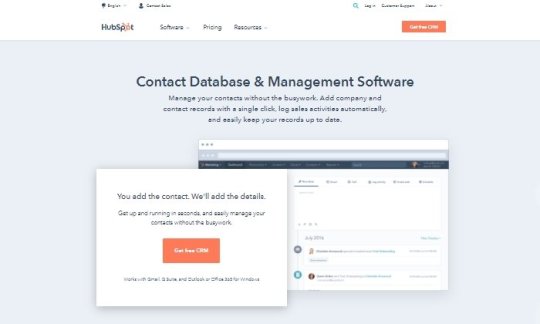
HubSpot stands alone as a powerful free contact management system with tons of accessible tools to enhance your sales cycle from beginning to end.
That’s because HubSpot gives away a free version of its award-winning CRM (customer relationship management) software . Contact management is one of the foundational services included with this suite, but you will find tools for sales, marketing, and customer service teams.
For a free product, it’s unbelievably rich.
Focusing in on just the list of contact management tasks you can do for free with HubSpot’s software still gives you a long list. You can keep track of contact website activity, deals, company insights, manage ticketing, manage ads, email tracking and notifications, and even messenger integrations.
HubSpot’s free contact management software is an excellent stepping stone toward more varied and growth-oriented contact management as your business grows since you can always upgrade to one of their paid CRM plans without having to migrate.
If you’re getting started with contact management and want to do more with your contacts in terms of sales strategy on a budget, I recommend you start onboarding HubSpot’s free tools for a strong beginning.
Start using HubSpot for free here.
#2 – Bigin Review — The Best For Simple Contact Management

A small or mid-sized business doesn’t always have use for tools built with enterprises in mind. Bigin takes the prize for a simple yet reliable contact manager you can easily start with.
A single dashboard unifies all your data points so you can make strategic decisions at a glance and manage everyone on your roster. It helps to think of it as your own personal yellow pages except for ten times more useful.
You can do things like adding your preferred tags to contacts to find what you’re looking for quickly, glance over at your expected revenue numbers, and see all your pending tasks.
Bigin makes it easier for you to close deals by scheduling follow-up activities and then closely monitoring results, all on an intuitive dashboard.
Bigin’s simplicity bleeds into its pricing structure, too. Here’s a quick overview:
Free
Single user
500 contacts
One pipeline
Express – $7/user per month
50,000 contacts
5 pipelines
Add 10,000 additional contacts for $1/month
Up to 20 custom fields per module and 10 custom dashboards
It’s that simple. One user with one pipeline can manage up to 500 contacts free, forever. And the paid tier isn’t tough to stomach, either.
Get started with Bigin here to go beyond managing a simple list of contacts.
#3 – Pipedrive Review — The Best For Visual Contact Management
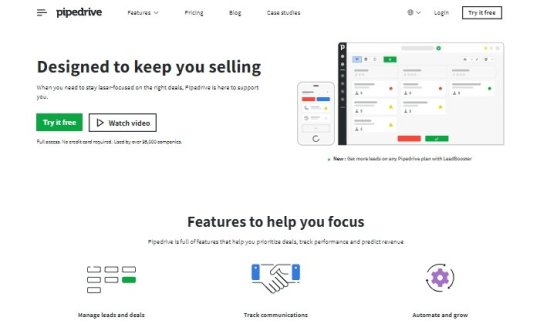
Pipedrive is loved not just for the wide array of CMS tools it offers but because it makes the whole contact management and sales process straightforward and visual. It’s been used by over 90,000 companies in more than 170 countries and business giants like Vimeo, Amazon, and Re/Max.
Pipedrive is a highly intuitive system that easily updates and automates contact tasks and sales calls. The easy drag-and-drop features and their clean and approachable interface make them an easily adaptable and usable system.
With a visual dashboard in mind, they don’t falter in the features department, as it offers plenty of tools for powerful contact management like task automation, lead pipelines, and smart lists that track the last time you contacted a prospect.
You can always try Pipedrive free for 14 days. It doesn’t hurt to spend a few days trying out the software’s ins and outs to see if they’re a good company match. Otherwise, the ricing plans break into four tiers:
Essential – $12.50
Advanced – $24.90
Professional – $49.90
Enterprise – $99
#4 – Zendesk Review — Best For Reporting and Analytics

Zendesk is a dynamic CMS that emphasizes the analytical and reporting aspects of contact management.
The last thing you want is to grow a robust list of leads and then have no idea what to do with them due to lack of data. Zendesk’s analytics make it possible for you to engage in better conversations with your prospects with their pre-built analytics features.
With them, you can track rep activities, call response times, and live chat interactions. Their rich reporting features ensure you keep a finger on every touchpoint of your sales cycle. This makes it easy to increase the ROI of each sales rep on your team.
Zendesk’s price breakdowns can get specific depending on the solutions and features you’re looking for. The contact and relationship management tiers start at $19 per seat.
Here’s a quick overview of the pricing tiers:
Team – $19 per seat per month
Professional – $49 per seat per month
Enterprise – $99 per seat per month
Elite – $199 per seat per month
Get started with a free demo of Zendesk here .
#5 – Salesforce Review — The Best Scalable CMS
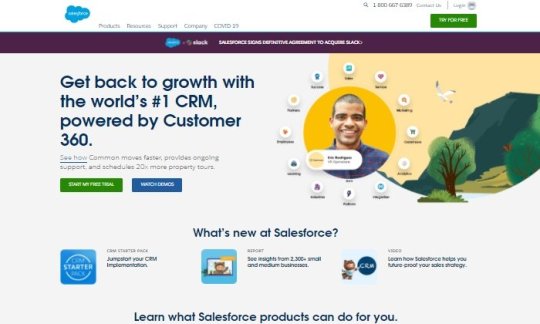
Contact management software that scales with you and offers powerful tools to take you beyond the basics? There’s a tool for that. It’s called Salesforce.
The point of a CMS is to increase the efficiency of your daily operations, so you’re never blindsided by lost sales or missed relationship-building opportunities.
Salesforce does that by offering the tools to build a good contact management base. This means contact history, survey answers, and email responses. But they take it a step further with their social data tool to keep track of what your customer is saying about products and services.
Not only that, but Salesforce makes it easy to collaborate with everyone in your business. You can share documents, comments, analytics and insights, sales history, and any other information relevant to your ROI.
On-the-go contact management is also possible with its mobile app. You can hop on a call armed with plenty of preemptive information about your customer from anywhere. This awesome array of tools makes Salesforce not only a contact management tool but a sales closing system, too, which is why it’s made it on my top five picks.
Here’s a breakdown of each plan they offer:
Essential – $25
Professional – $75
Enterprise – $150
Unlimited – $300
Each plan comes with:
Account, contact, lead, and opportunity management
Email integration with Gmail and Outlook
Access to the Salesforce mobile app and all it’s features
The higher the tier, the more access to customizable features and tools you’ll have. Thankfully, you don’t have to jump right into a plan without testing how they work first.
Salesforce also gives you the option of testing any pricing tier first before committing.
Try Salesforce for free fi rst here and see what plan fits your contact management needs the best.
What I Looked at to Find the Best Contact Management Software
Choosing the best contact management software goes beyond making sure they provide the standard contact management software (CMS) tools like sales tracking, customer notes, emails, and sales history.
Your business is unique, which means your CMS needs are also unique. Because of this, it’s hard to pinpoint a one-size-fits-all CMS that you can use in any given sales scenario or industry.
You also have to consider the size of your team, your plans for scaling and revenue growth, and what functionalities are non-negotiable in your given industry.
Beyond that, there are a few specific key factors to think through when trying to make the best choice in a sea of software. Use these criteria to ensure you’re making the best contact management investment possible.
Reporting and Analytics Capabilities
Some contact management systems put more emphasis on sales reporting and analytics than others. This can prove to be a valuable asset or just an extra feature to your team, depending on how you handle your sales process.
These days, contact management software is increasingly robust in terms of the analytics it can gather to help you make the best sales decisions. Some of them can measure everything from live chat interactions to sales calls, email responses, and even what you’re prospective customers say on social media about you or your competitor’s product or service.
Deciding how deep you need your contact management analytics to go will ultimately depend on your sales goals and budget. Consulting with your sales team can be a sound idea in the process of making a final decision.
Sales Process and Software Fit
The sales process you use to sell printers isn’t necessarily the same one you’d use to sell premium car parts. This also means you’ll want to find a CMS that fits every unique point of sale your team goes through continuously.
If done right, this can mean higher ROI, shorter sales cycles, and more revenue. This is where it’s a good idea to take the time to test drive every prospective CMS that looks appealing to your sales team. Most of them have the option for a demo or a 14-day free trial.
These trials exist for a reason. I highly recommend you take advantage of them before you commit.
User Experience
The more scalable integrations and features a CMS has, the more likely it is to have a big learning curve. This is important to take into account when thinking about onboarding your sales team to the system successfully.
Besides that, the user experience for both your front-facing customer features like contact forms and chatbots and the backend features your sales team will have to interact with daily is also a crucial part of the process as far as ease of use goes.
An array of powerful features is pretty much useless if your sales team continually runs into trouble using them, or if integrations prove too clunky to operate properly.
This also raises questions about what support features your preferred CMS provides and whether they offer any accompanying training options like forums, live chats, or even training webinars.
Summary
Finding the right contact management system can make the difference between constant sales, shorter sales cycles, and more efficient business growth all around.
But it starts with figuring out what your sales needs are, how you go through your sales strategy, and what you need to optimize for higher ROI. Once you’ve figured out your key needs, you can start narrowing down your list of prospects.
My recommendations are all excellent products, but they each have their strong suit:
HubSpot – Best free contact management software
Bigin – Best for simple contact management
Pipedrive – Best for visual contact management
Zendesk – Best for reporting and analytics
Salesforce – Best scalable contact management software
My top choices for effective contact management are HubSpot , because of their extensive list of free tools, and Salesforce , because of how versatile and adaptable they are. Make sure to use this review as a roadmap to make your final decision.

See How My Agency Can Drive Massive Amounts of Traffic to Your Website
SEO – unlock massive amounts of SEO traffic. See real results.
Content Marketing – our team creates epic content that will get shared, get links, and attract traffic.
Paid Media – effective paid strategies with clear ROI.
Book a Call




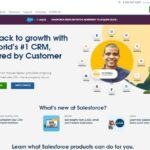

Go to Source Author: Neil Patel
This post Best Contact Management Software first appeared on WalrusVideo
0 notes
Text
Best Contact Management Software

Disclosure: This content is reader-supported, which means if you click on some of our links that we may earn a commission.
When you’re trying to make the sale, you want to be as tactful as possible. You want to talk to your customer at the exact time they want what you’re selling.
This means going beyond storing their basic contact information and tracking points of contact, rebuttals, and previous sales deals.
That’s where contact management software can be one of your most valuable sales tools. It helps you streamline your sales process so that you can close sales faster, keep your most valuable customers, and grow your business.
But how do you find the right contact manager to integrate into your sales system?
In this extensive guide, I review five of the top contact management tools on the market and walk you through the best features as well as their price points.
Let’s get started.
#1 – HubSpot Review — The Best Free Contact Management System
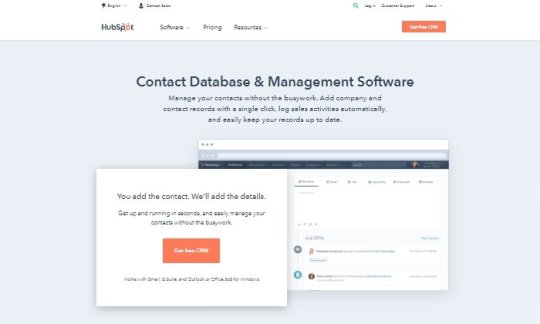
HubSpot stands alone as a powerful free contact management system with tons of accessible tools to enhance your sales cycle from beginning to end.
That’s because HubSpot gives away a free version of its award-winning CRM (customer relationship management) software . Contact management is one of the foundational services included with this suite, but you will find tools for sales, marketing, and customer service teams.
For a free product, it’s unbelievably rich.
Focusing in on just the list of contact management tasks you can do for free with HubSpot’s software still gives you a long list. You can keep track of contact website activity, deals, company insights, manage ticketing, manage ads, email tracking and notifications, and even messenger integrations.
HubSpot’s free contact management software is an excellent stepping stone toward more varied and growth-oriented contact management as your business grows since you can always upgrade to one of their paid CRM plans without having to migrate.
If you’re getting started with contact management and want to do more with your contacts in terms of sales strategy on a budget, I recommend you start onboarding HubSpot’s free tools for a strong beginning.
Start using HubSpot for free here.
#2 – Bigin Review — The Best For Simple Contact Management

A small or mid-sized business doesn’t always have use for tools built with enterprises in mind. Bigin takes the prize for a simple yet reliable contact manager you can easily start with.
A single dashboard unifies all your data points so you can make strategic decisions at a glance and manage everyone on your roster. It helps to think of it as your own personal yellow pages except for ten times more useful.
You can do things like adding your preferred tags to contacts to find what you’re looking for quickly, glance over at your expected revenue numbers, and see all your pending tasks.
Bigin makes it easier for you to close deals by scheduling follow-up activities and then closely monitoring results, all on an intuitive dashboard.
Bigin’s simplicity bleeds into its pricing structure, too. Here’s a quick overview:
Free
Single user
500 contacts
One pipeline
Express – $7/user per month
50,000 contacts
5 pipelines
Add 10,000 additional contacts for $1/month
Up to 20 custom fields per module and 10 custom dashboards
It’s that simple. One user with one pipeline can manage up to 500 contacts free, forever. And the paid tier isn’t tough to stomach, either.
Get started with Bigin here to go beyond managing a simple list of contacts.
#3 – Pipedrive Review — The Best For Visual Contact Management
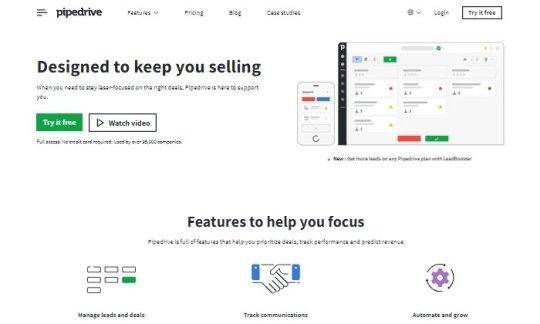
Pipedrive is loved not just for the wide array of CMS tools it offers but because it makes the whole contact management and sales process straightforward and visual. It’s been used by over 90,000 companies in more than 170 countries and business giants like Vimeo, Amazon, and Re/Max.
Pipedrive is a highly intuitive system that easily updates and automates contact tasks and sales calls. The easy drag-and-drop features and their clean and approachable interface make them an easily adaptable and usable system.
With a visual dashboard in mind, they don’t falter in the features department, as it offers plenty of tools for powerful contact management like task automation, lead pipelines, and smart lists that track the last time you contacted a prospect.
You can always try Pipedrive free for 14 days. It doesn’t hurt to spend a few days trying out the software’s ins and outs to see if they’re a good company match. Otherwise, the ricing plans break into four tiers:
Essential – $12.50
Advanced – $24.90
Professional – $49.90
Enterprise – $99
#4 – Zendesk Review — Best For Reporting and Analytics

Zendesk is a dynamic CMS that emphasizes the analytical and reporting aspects of contact management.
The last thing you want is to grow a robust list of leads and then have no idea what to do with them due to lack of data. Zendesk’s analytics make it possible for you to engage in better conversations with your prospects with their pre-built analytics features.
With them, you can track rep activities, call response times, and live chat interactions. Their rich reporting features ensure you keep a finger on every touchpoint of your sales cycle. This makes it easy to increase the ROI of each sales rep on your team.
Zendesk’s price breakdowns can get specific depending on the solutions and features you’re looking for. The contact and relationship management tiers start at $19 per seat.
Here’s a quick overview of the pricing tiers:
Team – $19 per seat per month
Professional – $49 per seat per month
Enterprise – $99 per seat per month
Elite – $199 per seat per month
Get started with a free demo of Zendesk here .
#5 – Salesforce Review — The Best Scalable CMS
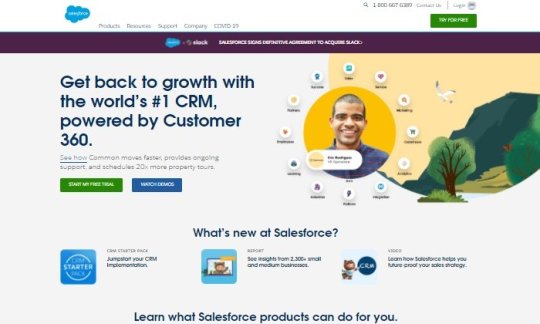
Contact management software that scales with you and offers powerful tools to take you beyond the basics? There’s a tool for that. It’s called Salesforce.
The point of a CMS is to increase the efficiency of your daily operations, so you’re never blindsided by lost sales or missed relationship-building opportunities.
Salesforce does that by offering the tools to build a good contact management base. This means contact history, survey answers, and email responses. But they take it a step further with their social data tool to keep track of what your customer is saying about products and services.
Not only that, but Salesforce makes it easy to collaborate with everyone in your business. You can share documents, comments, analytics and insights, sales history, and any other information relevant to your ROI.
On-the-go contact management is also possible with its mobile app. You can hop on a call armed with plenty of preemptive information about your customer from anywhere. This awesome array of tools makes Salesforce not only a contact management tool but a sales closing system, too, which is why it’s made it on my top five picks.
Here’s a breakdown of each plan they offer:
Essential – $25
Professional – $75
Enterprise – $150
Unlimited – $300
Each plan comes with:
Account, contact, lead, and opportunity management
Email integration with Gmail and Outlook
Access to the Salesforce mobile app and all it’s features
The higher the tier, the more access to customizable features and tools you’ll have. Thankfully, you don’t have to jump right into a plan without testing how they work first.
Salesforce also gives you the option of testing any pricing tier first before committing.
Try Salesforce for free fi rst here and see what plan fits your contact management needs the best.
What I Looked at to Find the Best Contact Management Software
Choosing the best contact management software goes beyond making sure they provide the standard contact management software (CMS) tools like sales tracking, customer notes, emails, and sales history.
Your business is unique, which means your CMS needs are also unique. Because of this, it’s hard to pinpoint a one-size-fits-all CMS that you can use in any given sales scenario or industry.
You also have to consider the size of your team, your plans for scaling and revenue growth, and what functionalities are non-negotiable in your given industry.
Beyond that, there are a few specific key factors to think through when trying to make the best choice in a sea of software. Use these criteria to ensure you’re making the best contact management investment possible.
Reporting and Analytics Capabilities
Some contact management systems put more emphasis on sales reporting and analytics than others. This can prove to be a valuable asset or just an extra feature to your team, depending on how you handle your sales process.
These days, contact management software is increasingly robust in terms of the analytics it can gather to help you make the best sales decisions. Some of them can measure everything from live chat interactions to sales calls, email responses, and even what you’re prospective customers say on social media about you or your competitor’s product or service.
Deciding how deep you need your contact management analytics to go will ultimately depend on your sales goals and budget. Consulting with your sales team can be a sound idea in the process of making a final decision.
Sales Process and Software Fit
The sales process you use to sell printers isn’t necessarily the same one you’d use to sell premium car parts. This also means you’ll want to find a CMS that fits every unique point of sale your team goes through continuously.
If done right, this can mean higher ROI, shorter sales cycles, and more revenue. This is where it’s a good idea to take the time to test drive every prospective CMS that looks appealing to your sales team. Most of them have the option for a demo or a 14-day free trial.
These trials exist for a reason. I highly recommend you take advantage of them before you commit.
User Experience
The more scalable integrations and features a CMS has, the more likely it is to have a big learning curve. This is important to take into account when thinking about onboarding your sales team to the system successfully.
Besides that, the user experience for both your front-facing customer features like contact forms and chatbots and the backend features your sales team will have to interact with daily is also a crucial part of the process as far as ease of use goes.
An array of powerful features is pretty much useless if your sales team continually runs into trouble using them, or if integrations prove too clunky to operate properly.
This also raises questions about what support features your preferred CMS provides and whether they offer any accompanying training options like forums, live chats, or even training webinars.
Summary
Finding the right contact management system can make the difference between constant sales, shorter sales cycles, and more efficient business growth all around.
But it starts with figuring out what your sales needs are, how you go through your sales strategy, and what you need to optimize for higher ROI. Once you’ve figured out your key needs, you can start narrowing down your list of prospects.
My recommendations are all excellent products, but they each have their strong suit:
HubSpot – Best free contact management software
Bigin – Best for simple contact management
Pipedrive – Best for visual contact management
Zendesk – Best for reporting and analytics
Salesforce – Best scalable contact management software
My top choices for effective contact management are HubSpot , because of their extensive list of free tools, and Salesforce , because of how versatile and adaptable they are. Make sure to use this review as a roadmap to make your final decision.

See How My Agency Can Drive Massive Amounts of Traffic to Your Website
SEO – unlock massive amounts of SEO traffic. See real results.
Content Marketing – our team creates epic content that will get shared, get links, and attract traffic.
Paid Media – effective paid strategies with clear ROI.
Book a Call




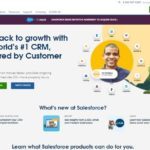

Go to Source Author: Neil Patel
This post Best Contact Management Software first appeared on WalrusVideo
0 notes
Text
Seamless Zendesk to Salesforce Data Migration Services
Simplify your Zendesk to Salesforce data migration with expert data migration services that prioritize accuracy, security, and minimal disruption. From data extraction to complete CRM data transfer, every step is carefully managed to maintain data quality. A systematic approach ensures clean, organized, and ready-to-use data in Salesforce, supporting efficient workflows and customer management. Choose a trusted team to handle the process and ensure a seamless transition tailored to your business needs.
0 notes
Text
Best Contact Management Software

Disclosure: This content is reader-supported, which means if you click on some of our links that we may earn a commission.
When you’re trying to make the sale, you want to be as tactful as possible. You want to talk to your customer at the exact time they want what you’re selling.
This means going beyond storing their basic contact information and tracking points of contact, rebuttals, and previous sales deals.
That’s where contact management software can be one of your most valuable sales tools. It helps you streamline your sales process so that you can close sales faster, keep your most valuable customers, and grow your business.
But how do you find the right contact manager to integrate into your sales system?
In this extensive guide, I review five of the top contact management tools on the market and walk you through the best features as well as their price points.
Let’s get started.
#1 – HubSpot Review — The Best Free Contact Management System
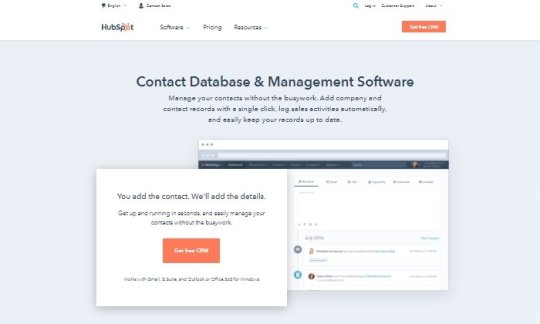
HubSpot stands alone as a powerful free contact management system with tons of accessible tools to enhance your sales cycle from beginning to end.
That’s because HubSpot gives away a free version of its award-winning CRM (customer relationship management) software . Contact management is one of the foundational services included with this suite, but you will find tools for sales, marketing, and customer service teams.
For a free product, it’s unbelievably rich.
Focusing in on just the list of contact management tasks you can do for free with HubSpot’s software still gives you a long list. You can keep track of contact website activity, deals, company insights, manage ticketing, manage ads, email tracking and notifications, and even messenger integrations.
HubSpot’s free contact management software is an excellent stepping stone toward more varied and growth-oriented contact management as your business grows since you can always upgrade to one of their paid CRM plans without having to migrate.
If you’re getting started with contact management and want to do more with your contacts in terms of sales strategy on a budget, I recommend you start onboarding HubSpot’s free tools for a strong beginning.
Start using HubSpot for free here.
#2 – Bigin Review — The Best For Simple Contact Management

A small or mid-sized business doesn’t always have use for tools built with enterprises in mind. Bigin takes the prize for a simple yet reliable contact manager you can easily start with.
A single dashboard unifies all your data points so you can make strategic decisions at a glance and manage everyone on your roster. It helps to think of it as your own personal yellow pages except for ten times more useful.
You can do things like adding your preferred tags to contacts to find what you’re looking for quickly, glance over at your expected revenue numbers, and see all your pending tasks.
Bigin makes it easier for you to close deals by scheduling follow-up activities and then closely monitoring results, all on an intuitive dashboard.
Bigin’s simplicity bleeds into its pricing structure, too. Here’s a quick overview:
Free
Single user
500 contacts
One pipeline
Express – $7/user per month
50,000 contacts
5 pipelines
Add 10,000 additional contacts for $1/month
Up to 20 custom fields per module and 10 custom dashboards
It’s that simple. One user with one pipeline can manage up to 500 contacts free, forever. And the paid tier isn’t tough to stomach, either.
Get started with Bigin here to go beyond managing a simple list of contacts.
#3 – Pipedrive Review — The Best For Visual Contact Management
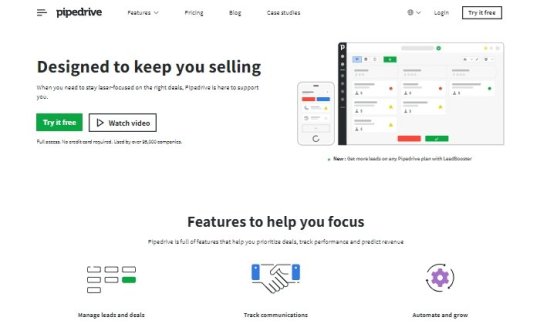
Pipedrive is loved not just for the wide array of CMS tools it offers but because it makes the whole contact management and sales process straightforward and visual. It’s been used by over 90,000 companies in more than 170 countries and business giants like Vimeo, Amazon, and Re/Max.
Pipedrive is a highly intuitive system that easily updates and automates contact tasks and sales calls. The easy drag-and-drop features and their clean and approachable interface make them an easily adaptable and usable system.
With a visual dashboard in mind, they don’t falter in the features department, as it offers plenty of tools for powerful contact management like task automation, lead pipelines, and smart lists that track the last time you contacted a prospect.
You can always try Pipedrive free for 14 days. It doesn’t hurt to spend a few days trying out the software’s ins and outs to see if they’re a good company match. Otherwise, the ricing plans break into four tiers:
Essential – $12.50
Advanced – $24.90
Professional – $49.90
Enterprise – $99
#4 – Zendesk Review — Best For Reporting and Analytics

Zendesk is a dynamic CMS that emphasizes the analytical and reporting aspects of contact management.
The last thing you want is to grow a robust list of leads and then have no idea what to do with them due to lack of data. Zendesk’s analytics make it possible for you to engage in better conversations with your prospects with their pre-built analytics features.
With them, you can track rep activities, call response times, and live chat interactions. Their rich reporting features ensure you keep a finger on every touchpoint of your sales cycle. This makes it easy to increase the ROI of each sales rep on your team.
Zendesk’s price breakdowns can get specific depending on the solutions and features you’re looking for. The contact and relationship management tiers start at $19 per seat.
Here’s a quick overview of the pricing tiers:
Team – $19 per seat per month
Professional – $49 per seat per month
Enterprise – $99 per seat per month
Elite – $199 per seat per month
Get started with a free demo of Zendesk here .
#5 – Salesforce Review — The Best Scalable CMS
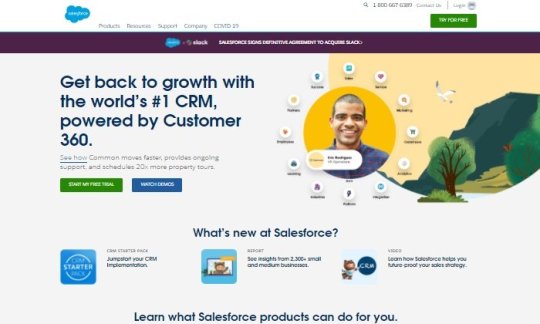
Contact management software that scales with you and offers powerful tools to take you beyond the basics? There’s a tool for that. It’s called Salesforce.
The point of a CMS is to increase the efficiency of your daily operations, so you’re never blindsided by lost sales or missed relationship-building opportunities.
Salesforce does that by offering the tools to build a good contact management base. This means contact history, survey answers, and email responses. But they take it a step further with their social data tool to keep track of what your customer is saying about products and services.
Not only that, but Salesforce makes it easy to collaborate with everyone in your business. You can share documents, comments, analytics and insights, sales history, and any other information relevant to your ROI.
On-the-go contact management is also possible with its mobile app. You can hop on a call armed with plenty of preemptive information about your customer from anywhere. This awesome array of tools makes Salesforce not only a contact management tool but a sales closing system, too, which is why it’s made it on my top five picks.
Here’s a breakdown of each plan they offer:
Essential – $25
Professional – $75
Enterprise – $150
Unlimited – $300
Each plan comes with:
Account, contact, lead, and opportunity management
Email integration with Gmail and Outlook
Access to the Salesforce mobile app and all it’s features
The higher the tier, the more access to customizable features and tools you’ll have. Thankfully, you don’t have to jump right into a plan without testing how they work first.
Salesforce also gives you the option of testing any pricing tier first before committing.
Try Salesforce for free fi rst here and see what plan fits your contact management needs the best.
What I Looked at to Find the Best Contact Management Software
Choosing the best contact management software goes beyond making sure they provide the standard contact management software (CMS) tools like sales tracking, customer notes, emails, and sales history.
Your business is unique, which means your CMS needs are also unique. Because of this, it’s hard to pinpoint a one-size-fits-all CMS that you can use in any given sales scenario or industry.
You also have to consider the size of your team, your plans for scaling and revenue growth, and what functionalities are non-negotiable in your given industry.
Beyond that, there are a few specific key factors to think through when trying to make the best choice in a sea of software. Use these criteria to ensure you’re making the best contact management investment possible.
Reporting and Analytics Capabilities
Some contact management systems put more emphasis on sales reporting and analytics than others. This can prove to be a valuable asset or just an extra feature to your team, depending on how you handle your sales process.
These days, contact management software is increasingly robust in terms of the analytics it can gather to help you make the best sales decisions. Some of them can measure everything from live chat interactions to sales calls, email responses, and even what you’re prospective customers say on social media about you or your competitor’s product or service.
Deciding how deep you need your contact management analytics to go will ultimately depend on your sales goals and budget. Consulting with your sales team can be a sound idea in the process of making a final decision.
Sales Process and Software Fit
The sales process you use to sell printers isn’t necessarily the same one you’d use to sell premium car parts. This also means you’ll want to find a CMS that fits every unique point of sale your team goes through continuously.
If done right, this can mean higher ROI, shorter sales cycles, and more revenue. This is where it’s a good idea to take the time to test drive every prospective CMS that looks appealing to your sales team. Most of them have the option for a demo or a 14-day free trial.
These trials exist for a reason. I highly recommend you take advantage of them before you commit.
User Experience
The more scalable integrations and features a CMS has, the more likely it is to have a big learning curve. This is important to take into account when thinking about onboarding your sales team to the system successfully.
Besides that, the user experience for both your front-facing customer features like contact forms and chatbots and the backend features your sales team will have to interact with daily is also a crucial part of the process as far as ease of use goes.
An array of powerful features is pretty much useless if your sales team continually runs into trouble using them, or if integrations prove too clunky to operate properly.
This also raises questions about what support features your preferred CMS provides and whether they offer any accompanying training options like forums, live chats, or even training webinars.
Summary
Finding the right contact management system can make the difference between constant sales, shorter sales cycles, and more efficient business growth all around.
But it starts with figuring out what your sales needs are, how you go through your sales strategy, and what you need to optimize for higher ROI. Once you’ve figured out your key needs, you can start narrowing down your list of prospects.
My recommendations are all excellent products, but they each have their strong suit:
HubSpot – Best free contact management software
Bigin – Best for simple contact management
Pipedrive – Best for visual contact management
Zendesk – Best for reporting and analytics
Salesforce – Best scalable contact management software
My top choices for effective contact management are HubSpot , because of their extensive list of free tools, and Salesforce , because of how versatile and adaptable they are. Make sure to use this review as a roadmap to make your final decision.

See How My Agency Can Drive Massive Amounts of Traffic to Your Website
SEO – unlock massive amounts of SEO traffic. See real results.
Content Marketing – our team creates epic content that will get shared, get links, and attract traffic.
Paid Media – effective paid strategies with clear ROI.
Book a Call




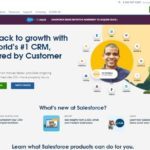

Go to Source Author: Neil Patel
This post Best Contact Management Software first appeared on WalrusVideo
0 notes
Text
Best Contact Management Software

Disclosure: This content is reader-supported, which means if you click on some of our links that we may earn a commission.
When you’re trying to make the sale, you want to be as tactful as possible. You want to talk to your customer at the exact time they want what you’re selling.
This means going beyond storing their basic contact information and tracking points of contact, rebuttals, and previous sales deals.
That’s where contact management software can be one of your most valuable sales tools. It helps you streamline your sales process so that you can close sales faster, keep your most valuable customers, and grow your business.
But how do you find the right contact manager to integrate into your sales system?
In this extensive guide, I review five of the top contact management tools on the market and walk you through the best features as well as their price points.
Let’s get started.
#1 – HubSpot Review — The Best Free Contact Management System
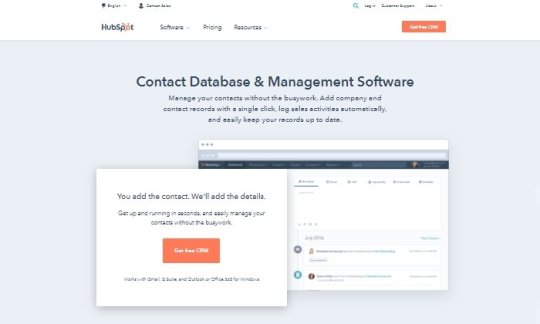
HubSpot stands alone as a powerful free contact management system with tons of accessible tools to enhance your sales cycle from beginning to end.
That’s because HubSpot gives away a free version of its award-winning CRM (customer relationship management) software . Contact management is one of the foundational services included with this suite, but you will find tools for sales, marketing, and customer service teams.
For a free product, it’s unbelievably rich.
Focusing in on just the list of contact management tasks you can do for free with HubSpot’s software still gives you a long list. You can keep track of contact website activity, deals, company insights, manage ticketing, manage ads, email tracking and notifications, and even messenger integrations.
HubSpot’s free contact management software is an excellent stepping stone toward more varied and growth-oriented contact management as your business grows since you can always upgrade to one of their paid CRM plans without having to migrate.
If you’re getting started with contact management and want to do more with your contacts in terms of sales strategy on a budget, I recommend you start onboarding HubSpot’s free tools for a strong beginning.
Start using HubSpot for free here.
#2 – Bigin Review — The Best For Simple Contact Management

A small or mid-sized business doesn’t always have use for tools built with enterprises in mind. Bigin takes the prize for a simple yet reliable contact manager you can easily start with.
A single dashboard unifies all your data points so you can make strategic decisions at a glance and manage everyone on your roster. It helps to think of it as your own personal yellow pages except for ten times more useful.
You can do things like adding your preferred tags to contacts to find what you’re looking for quickly, glance over at your expected revenue numbers, and see all your pending tasks.
Bigin makes it easier for you to close deals by scheduling follow-up activities and then closely monitoring results, all on an intuitive dashboard.
Bigin’s simplicity bleeds into its pricing structure, too. Here’s a quick overview:
Free
Single user
500 contacts
One pipeline
Express – $7/user per month
50,000 contacts
5 pipelines
Add 10,000 additional contacts for $1/month
Up to 20 custom fields per module and 10 custom dashboards
It’s that simple. One user with one pipeline can manage up to 500 contacts free, forever. And the paid tier isn’t tough to stomach, either.
Get started with Bigin here to go beyond managing a simple list of contacts.
#3 – Pipedrive Review — The Best For Visual Contact Management
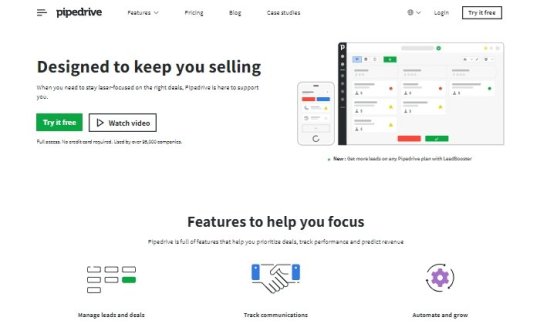
Pipedrive is loved not just for the wide array of CMS tools it offers but because it makes the whole contact management and sales process straightforward and visual. It’s been used by over 90,000 companies in more than 170 countries and business giants like Vimeo, Amazon, and Re/Max.
Pipedrive is a highly intuitive system that easily updates and automates contact tasks and sales calls. The easy drag-and-drop features and their clean and approachable interface make them an easily adaptable and usable system.
With a visual dashboard in mind, they don’t falter in the features department, as it offers plenty of tools for powerful contact management like task automation, lead pipelines, and smart lists that track the last time you contacted a prospect.
You can always try Pipedrive free for 14 days. It doesn’t hurt to spend a few days trying out the software’s ins and outs to see if they’re a good company match. Otherwise, the ricing plans break into four tiers:
Essential – $12.50
Advanced – $24.90
Professional – $49.90
Enterprise – $99
#4 – Zendesk Review — Best For Reporting and Analytics

Zendesk is a dynamic CMS that emphasizes the analytical and reporting aspects of contact management.
The last thing you want is to grow a robust list of leads and then have no idea what to do with them due to lack of data. Zendesk’s analytics make it possible for you to engage in better conversations with your prospects with their pre-built analytics features.
With them, you can track rep activities, call response times, and live chat interactions. Their rich reporting features ensure you keep a finger on every touchpoint of your sales cycle. This makes it easy to increase the ROI of each sales rep on your team.
Zendesk’s price breakdowns can get specific depending on the solutions and features you’re looking for. The contact and relationship management tiers start at $19 per seat.
Here’s a quick overview of the pricing tiers:
Team – $19 per seat per month
Professional – $49 per seat per month
Enterprise – $99 per seat per month
Elite – $199 per seat per month
Get started with a free demo of Zendesk here .
#5 – Salesforce Review — The Best Scalable CMS
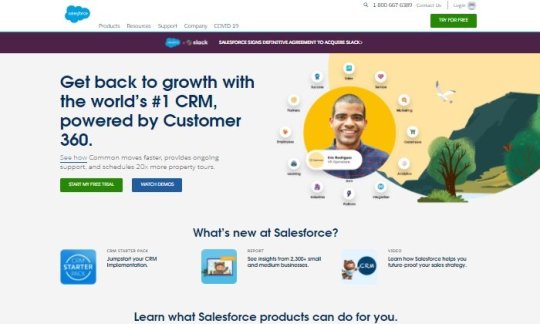
Contact management software that scales with you and offers powerful tools to take you beyond the basics? There’s a tool for that. It’s called Salesforce.
The point of a CMS is to increase the efficiency of your daily operations, so you’re never blindsided by lost sales or missed relationship-building opportunities.
Salesforce does that by offering the tools to build a good contact management base. This means contact history, survey answers, and email responses. But they take it a step further with their social data tool to keep track of what your customer is saying about products and services.
Not only that, but Salesforce makes it easy to collaborate with everyone in your business. You can share documents, comments, analytics and insights, sales history, and any other information relevant to your ROI.
On-the-go contact management is also possible with its mobile app. You can hop on a call armed with plenty of preemptive information about your customer from anywhere. This awesome array of tools makes Salesforce not only a contact management tool but a sales closing system, too, which is why it’s made it on my top five picks.
Here’s a breakdown of each plan they offer:
Essential – $25
Professional – $75
Enterprise – $150
Unlimited – $300
Each plan comes with:
Account, contact, lead, and opportunity management
Email integration with Gmail and Outlook
Access to the Salesforce mobile app and all it’s features
The higher the tier, the more access to customizable features and tools you’ll have. Thankfully, you don’t have to jump right into a plan without testing how they work first.
Salesforce also gives you the option of testing any pricing tier first before committing.
Try Salesforce for free fi rst here and see what plan fits your contact management needs the best.
What I Looked at to Find the Best Contact Management Software
Choosing the best contact management software goes beyond making sure they provide the standard contact management software (CMS) tools like sales tracking, customer notes, emails, and sales history.
Your business is unique, which means your CMS needs are also unique. Because of this, it’s hard to pinpoint a one-size-fits-all CMS that you can use in any given sales scenario or industry.
You also have to consider the size of your team, your plans for scaling and revenue growth, and what functionalities are non-negotiable in your given industry.
Beyond that, there are a few specific key factors to think through when trying to make the best choice in a sea of software. Use these criteria to ensure you’re making the best contact management investment possible.
Reporting and Analytics Capabilities
Some contact management systems put more emphasis on sales reporting and analytics than others. This can prove to be a valuable asset or just an extra feature to your team, depending on how you handle your sales process.
These days, contact management software is increasingly robust in terms of the analytics it can gather to help you make the best sales decisions. Some of them can measure everything from live chat interactions to sales calls, email responses, and even what you’re prospective customers say on social media about you or your competitor’s product or service.
Deciding how deep you need your contact management analytics to go will ultimately depend on your sales goals and budget. Consulting with your sales team can be a sound idea in the process of making a final decision.
Sales Process and Software Fit
The sales process you use to sell printers isn’t necessarily the same one you’d use to sell premium car parts. This also means you’ll want to find a CMS that fits every unique point of sale your team goes through continuously.
If done right, this can mean higher ROI, shorter sales cycles, and more revenue. This is where it’s a good idea to take the time to test drive every prospective CMS that looks appealing to your sales team. Most of them have the option for a demo or a 14-day free trial.
These trials exist for a reason. I highly recommend you take advantage of them before you commit.
User Experience
The more scalable integrations and features a CMS has, the more likely it is to have a big learning curve. This is important to take into account when thinking about onboarding your sales team to the system successfully.
Besides that, the user experience for both your front-facing customer features like contact forms and chatbots and the backend features your sales team will have to interact with daily is also a crucial part of the process as far as ease of use goes.
An array of powerful features is pretty much useless if your sales team continually runs into trouble using them, or if integrations prove too clunky to operate properly.
This also raises questions about what support features your preferred CMS provides and whether they offer any accompanying training options like forums, live chats, or even training webinars.
Summary
Finding the right contact management system can make the difference between constant sales, shorter sales cycles, and more efficient business growth all around.
But it starts with figuring out what your sales needs are, how you go through your sales strategy, and what you need to optimize for higher ROI. Once you’ve figured out your key needs, you can start narrowing down your list of prospects.
My recommendations are all excellent products, but they each have their strong suit:
HubSpot – Best free contact management software
Bigin – Best for simple contact management
Pipedrive – Best for visual contact management
Zendesk – Best for reporting and analytics
Salesforce – Best scalable contact management software
My top choices for effective contact management are HubSpot , because of their extensive list of free tools, and Salesforce , because of how versatile and adaptable they are. Make sure to use this review as a roadmap to make your final decision.

See How My Agency Can Drive Massive Amounts of Traffic to Your Website
SEO – unlock massive amounts of SEO traffic. See real results.
Content Marketing – our team creates epic content that will get shared, get links, and attract traffic.
Paid Media – effective paid strategies with clear ROI.
Book a Call




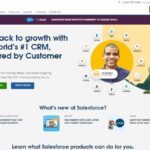

Go to Source Author: Neil Patel
This post Best Contact Management Software first appeared on WalrusVideo
0 notes
Text
Best Contact Management Software

Disclosure: This content is reader-supported, which means if you click on some of our links that we may earn a commission.
When you’re trying to make the sale, you want to be as tactful as possible. You want to talk to your customer at the exact time they want what you’re selling.
This means going beyond storing their basic contact information and tracking points of contact, rebuttals, and previous sales deals.
That’s where contact management software can be one of your most valuable sales tools. It helps you streamline your sales process so that you can close sales faster, keep your most valuable customers, and grow your business.
But how do you find the right contact manager to integrate into your sales system?
In this extensive guide, I review five of the top contact management tools on the market and walk you through the best features as well as their price points.
Let’s get started.
#1 – HubSpot Review — The Best Free Contact Management System

HubSpot stands alone as a powerful free contact management system with tons of accessible tools to enhance your sales cycle from beginning to end.
That’s because HubSpot gives away a free version of its award-winning CRM (customer relationship management) software . Contact management is one of the foundational services included with this suite, but you will find tools for sales, marketing, and customer service teams.
For a free product, it’s unbelievably rich.
Focusing in on just the list of contact management tasks you can do for free with HubSpot’s software still gives you a long list. You can keep track of contact website activity, deals, company insights, manage ticketing, manage ads, email tracking and notifications, and even messenger integrations.
HubSpot’s free contact management software is an excellent stepping stone toward more varied and growth-oriented contact management as your business grows since you can always upgrade to one of their paid CRM plans without having to migrate.
If you’re getting started with contact management and want to do more with your contacts in terms of sales strategy on a budget, I recommend you start onboarding HubSpot’s free tools for a strong beginning.
Start using HubSpot for free here.
#2 – Bigin Review — The Best For Simple Contact Management

A small or mid-sized business doesn’t always have use for tools built with enterprises in mind. Bigin takes the prize for a simple yet reliable contact manager you can easily start with.
A single dashboard unifies all your data points so you can make strategic decisions at a glance and manage everyone on your roster. It helps to think of it as your own personal yellow pages except for ten times more useful.
You can do things like adding your preferred tags to contacts to find what you’re looking for quickly, glance over at your expected revenue numbers, and see all your pending tasks.
Bigin makes it easier for you to close deals by scheduling follow-up activities and then closely monitoring results, all on an intuitive dashboard.
Bigin’s simplicity bleeds into its pricing structure, too. Here’s a quick overview:
Free
Single user
500 contacts
One pipeline
Express – $7/user per month
50,000 contacts
5 pipelines
Add 10,000 additional contacts for $1/month
Up to 20 custom fields per module and 10 custom dashboards
It’s that simple. One user with one pipeline can manage up to 500 contacts free, forever. And the paid tier isn’t tough to stomach, either.
Get started with Bigin here to go beyond managing a simple list of contacts.
#3 – Pipedrive Review — The Best For Visual Contact Management

Pipedrive is loved not just for the wide array of CMS tools it offers but because it makes the whole contact management and sales process straightforward and visual. It’s been used by over 90,000 companies in more than 170 countries and business giants like Vimeo, Amazon, and Re/Max.
Pipedrive is a highly intuitive system that easily updates and automates contact tasks and sales calls. The easy drag-and-drop features and their clean and approachable interface make them an easily adaptable and usable system.
With a visual dashboard in mind, they don’t falter in the features department, as it offers plenty of tools for powerful contact management like task automation, lead pipelines, and smart lists that track the last time you contacted a prospect.
You can always try Pipedrive free for 14 days. It doesn’t hurt to spend a few days trying out the software’s ins and outs to see if they’re a good company match. Otherwise, the ricing plans break into four tiers:
Essential – $12.50
Advanced – $24.90
Professional – $49.90
Enterprise – $99
#4 – Zendesk Review — Best For Reporting and Analytics

Zendesk is a dynamic CMS that emphasizes the analytical and reporting aspects of contact management.
The last thing you want is to grow a robust list of leads and then have no idea what to do with them due to lack of data. Zendesk’s analytics make it possible for you to engage in better conversations with your prospects with their pre-built analytics features.
With them, you can track rep activities, call response times, and live chat interactions. Their rich reporting features ensure you keep a finger on every touchpoint of your sales cycle. This makes it easy to increase the ROI of each sales rep on your team.
Zendesk’s price breakdowns can get specific depending on the solutions and features you’re looking for. The contact and relationship management tiers start at $19 per seat.
Here’s a quick overview of the pricing tiers:
Team – $19 per seat per month
Professional – $49 per seat per month
Enterprise – $99 per seat per month
Elite – $199 per seat per month
Get started with a free demo of Zendesk here .
#5 – Salesforce Review — The Best Scalable CMS

Contact management software that scales with you and offers powerful tools to take you beyond the basics? There’s a tool for that. It’s called Salesforce.
The point of a CMS is to increase the efficiency of your daily operations, so you’re never blindsided by lost sales or missed relationship-building opportunities.
Salesforce does that by offering the tools to build a good contact management base. This means contact history, survey answers, and email responses. But they take it a step further with their social data tool to keep track of what your customer is saying about products and services.
Not only that, but Salesforce makes it easy to collaborate with everyone in your business. You can share documents, comments, analytics and insights, sales history, and any other information relevant to your ROI.
On-the-go contact management is also possible with its mobile app. You can hop on a call armed with plenty of preemptive information about your customer from anywhere. This awesome array of tools makes Salesforce not only a contact management tool but a sales closing system, too, which is why it’s made it on my top five picks.
Here’s a breakdown of each plan they offer:
Essential – $25
Professional – $75
Enterprise – $150
Unlimited – $300
Each plan comes with:
Account, contact, lead, and opportunity management
Email integration with Gmail and Outlook
Access to the Salesforce mobile app and all it’s features
The higher the tier, the more access to customizable features and tools you’ll have. Thankfully, you don’t have to jump right into a plan without testing how they work first.
Salesforce also gives you the option of testing any pricing tier first before committing.
Try Salesforce for free fi rst here and see what plan fits your contact management needs the best.
What I Looked at to Find the Best Contact Management Software
Choosing the best contact management software goes beyond making sure they provide the standard contact management software (CMS) tools like sales tracking, customer notes, emails, and sales history.
Your business is unique, which means your CMS needs are also unique. Because of this, it’s hard to pinpoint a one-size-fits-all CMS that you can use in any given sales scenario or industry.
You also have to consider the size of your team, your plans for scaling and revenue growth, and what functionalities are non-negotiable in your given industry.
Beyond that, there are a few specific key factors to think through when trying to make the best choice in a sea of software. Use these criteria to ensure you’re making the best contact management investment possible.
Reporting and Analytics Capabilities
Some contact management systems put more emphasis on sales reporting and analytics than others. This can prove to be a valuable asset or just an extra feature to your team, depending on how you handle your sales process.
These days, contact management software is increasingly robust in terms of the analytics it can gather to help you make the best sales decisions. Some of them can measure everything from live chat interactions to sales calls, email responses, and even what you’re prospective customers say on social media about you or your competitor’s product or service.
Deciding how deep you need your contact management analytics to go will ultimately depend on your sales goals and budget. Consulting with your sales team can be a sound idea in the process of making a final decision.
Sales Process and Software Fit
The sales process you use to sell printers isn’t necessarily the same one you’d use to sell premium car parts. This also means you’ll want to find a CMS that fits every unique point of sale your team goes through continuously.
If done right, this can mean higher ROI, shorter sales cycles, and more revenue. This is where it’s a good idea to take the time to test drive every prospective CMS that looks appealing to your sales team. Most of them have the option for a demo or a 14-day free trial.
These trials exist for a reason. I highly recommend you take advantage of them before you commit.
User Experience
The more scalable integrations and features a CMS has, the more likely it is to have a big learning curve. This is important to take into account when thinking about onboarding your sales team to the system successfully.
Besides that, the user experience for both your front-facing customer features like contact forms and chatbots and the backend features your sales team will have to interact with daily is also a crucial part of the process as far as ease of use goes.
An array of powerful features is pretty much useless if your sales team continually runs into trouble using them, or if integrations prove too clunky to operate properly.
This also raises questions about what support features your preferred CMS provides and whether they offer any accompanying training options like forums, live chats, or even training webinars.
Summary
Finding the right contact management system can make the difference between constant sales, shorter sales cycles, and more efficient business growth all around.
But it starts with figuring out what your sales needs are, how you go through your sales strategy, and what you need to optimize for higher ROI. Once you’ve figured out your key needs, you can start narrowing down your list of prospects.
My recommendations are all excellent products, but they each have their strong suit:
HubSpot – Best free contact management software
Bigin – Best for simple contact management
Pipedrive – Best for visual contact management
Zendesk – Best for reporting and analytics
Salesforce – Best scalable contact management software
My top choices for effective contact management are HubSpot , because of their extensive list of free tools, and Salesforce , because of how versatile and adaptable they are. Make sure to use this review as a roadmap to make your final decision.

See How My Agency Can Drive Massive Amounts of Traffic to Your Website
SEO – unlock massive amounts of SEO traffic. See real results.
Content Marketing – our team creates epic content that will get shared, get links, and attract traffic.
Paid Media – effective paid strategies with clear ROI.
Book a Call






Go to Source Author: Neil Patel
This post Best Contact Management Software first appeared on WalrusVideo
0 notes
Text
Best Contact Management Software

Disclosure: This content is reader-supported, which means if you click on some of our links that we may earn a commission.
When you’re trying to make the sale, you want to be as tactful as possible. You want to talk to your customer at the exact time they want what you’re selling.
This means going beyond storing their basic contact information and tracking points of contact, rebuttals, and previous sales deals.
That’s where contact management software can be one of your most valuable sales tools. It helps you streamline your sales process so that you can close sales faster, keep your most valuable customers, and grow your business.
But how do you find the right contact manager to integrate into your sales system?
In this extensive guide, I review five of the top contact management tools on the market and walk you through the best features as well as their price points.
Let’s get started.
#1 – HubSpot Review — The Best Free Contact Management System

HubSpot stands alone as a powerful free contact management system with tons of accessible tools to enhance your sales cycle from beginning to end.
That’s because HubSpot gives away a free version of its award-winning CRM (customer relationship management) software . Contact management is one of the foundational services included with this suite, but you will find tools for sales, marketing, and customer service teams.
For a free product, it’s unbelievably rich.
Focusing in on just the list of contact management tasks you can do for free with HubSpot’s software still gives you a long list. You can keep track of contact website activity, deals, company insights, manage ticketing, manage ads, email tracking and notifications, and even messenger integrations.
HubSpot’s free contact management software is an excellent stepping stone toward more varied and growth-oriented contact management as your business grows since you can always upgrade to one of their paid CRM plans without having to migrate.
If you’re getting started with contact management and want to do more with your contacts in terms of sales strategy on a budget, I recommend you start onboarding HubSpot’s free tools for a strong beginning.
Start using HubSpot for free here.
#2 – Bigin Review — The Best For Simple Contact Management

A small or mid-sized business doesn’t always have use for tools built with enterprises in mind. Bigin takes the prize for a simple yet reliable contact manager you can easily start with.
A single dashboard unifies all your data points so you can make strategic decisions at a glance and manage everyone on your roster. It helps to think of it as your own personal yellow pages except for ten times more useful.
You can do things like adding your preferred tags to contacts to find what you’re looking for quickly, glance over at your expected revenue numbers, and see all your pending tasks.
Bigin makes it easier for you to close deals by scheduling follow-up activities and then closely monitoring results, all on an intuitive dashboard.
Bigin’s simplicity bleeds into its pricing structure, too. Here’s a quick overview:
Free
Single user
500 contacts
One pipeline
Express – $7/user per month
50,000 contacts
5 pipelines
Add 10,000 additional contacts for $1/month
Up to 20 custom fields per module and 10 custom dashboards
It’s that simple. One user with one pipeline can manage up to 500 contacts free, forever. And the paid tier isn’t tough to stomach, either.
Get started with Bigin here to go beyond managing a simple list of contacts.
#3 – Pipedrive Review — The Best For Visual Contact Management

Pipedrive is loved not just for the wide array of CMS tools it offers but because it makes the whole contact management and sales process straightforward and visual. It’s been used by over 90,000 companies in more than 170 countries and business giants like Vimeo, Amazon, and Re/Max.
Pipedrive is a highly intuitive system that easily updates and automates contact tasks and sales calls. The easy drag-and-drop features and their clean and approachable interface make them an easily adaptable and usable system.
With a visual dashboard in mind, they don’t falter in the features department, as it offers plenty of tools for powerful contact management like task automation, lead pipelines, and smart lists that track the last time you contacted a prospect.
You can always try Pipedrive free for 14 days. It doesn’t hurt to spend a few days trying out the software’s ins and outs to see if they’re a good company match. Otherwise, the ricing plans break into four tiers:
Essential – $12.50
Advanced – $24.90
Professional – $49.90
Enterprise – $99
#4 – Zendesk Review — Best For Reporting and Analytics

Zendesk is a dynamic CMS that emphasizes the analytical and reporting aspects of contact management.
The last thing you want is to grow a robust list of leads and then have no idea what to do with them due to lack of data. Zendesk’s analytics make it possible for you to engage in better conversations with your prospects with their pre-built analytics features.
With them, you can track rep activities, call response times, and live chat interactions. Their rich reporting features ensure you keep a finger on every touchpoint of your sales cycle. This makes it easy to increase the ROI of each sales rep on your team.
Zendesk’s price breakdowns can get specific depending on the solutions and features you’re looking for. The contact and relationship management tiers start at $19 per seat.
Here’s a quick overview of the pricing tiers:
Team – $19 per seat per month
Professional – $49 per seat per month
Enterprise – $99 per seat per month
Elite – $199 per seat per month
Get started with a free demo of Zendesk here .
#5 – Salesforce Review — The Best Scalable CMS

Contact management software that scales with you and offers powerful tools to take you beyond the basics? There’s a tool for that. It’s called Salesforce.
The point of a CMS is to increase the efficiency of your daily operations, so you’re never blindsided by lost sales or missed relationship-building opportunities.
Salesforce does that by offering the tools to build a good contact management base. This means contact history, survey answers, and email responses. But they take it a step further with their social data tool to keep track of what your customer is saying about products and services.
Not only that, but Salesforce makes it easy to collaborate with everyone in your business. You can share documents, comments, analytics and insights, sales history, and any other information relevant to your ROI.
On-the-go contact management is also possible with its mobile app. You can hop on a call armed with plenty of preemptive information about your customer from anywhere. This awesome array of tools makes Salesforce not only a contact management tool but a sales closing system, too, which is why it’s made it on my top five picks.
Here’s a breakdown of each plan they offer:
Essential – $25
Professional – $75
Enterprise – $150
Unlimited – $300
Each plan comes with:
Account, contact, lead, and opportunity management
Email integration with Gmail and Outlook
Access to the Salesforce mobile app and all it’s features
The higher the tier, the more access to customizable features and tools you’ll have. Thankfully, you don’t have to jump right into a plan without testing how they work first.
Salesforce also gives you the option of testing any pricing tier first before committing.
Try Salesforce for free fi rst here and see what plan fits your contact management needs the best.
What I Looked at to Find the Best Contact Management Software
Choosing the best contact management software goes beyond making sure they provide the standard contact management software (CMS) tools like sales tracking, customer notes, emails, and sales history.
Your business is unique, which means your CMS needs are also unique. Because of this, it’s hard to pinpoint a one-size-fits-all CMS that you can use in any given sales scenario or industry.
You also have to consider the size of your team, your plans for scaling and revenue growth, and what functionalities are non-negotiable in your given industry.
Beyond that, there are a few specific key factors to think through when trying to make the best choice in a sea of software. Use these criteria to ensure you’re making the best contact management investment possible.
Reporting and Analytics Capabilities
Some contact management systems put more emphasis on sales reporting and analytics than others. This can prove to be a valuable asset or just an extra feature to your team, depending on how you handle your sales process.
These days, contact management software is increasingly robust in terms of the analytics it can gather to help you make the best sales decisions. Some of them can measure everything from live chat interactions to sales calls, email responses, and even what you’re prospective customers say on social media about you or your competitor’s product or service.
Deciding how deep you need your contact management analytics to go will ultimately depend on your sales goals and budget. Consulting with your sales team can be a sound idea in the process of making a final decision.
Sales Process and Software Fit
The sales process you use to sell printers isn’t necessarily the same one you’d use to sell premium car parts. This also means you’ll want to find a CMS that fits every unique point of sale your team goes through continuously.
If done right, this can mean higher ROI, shorter sales cycles, and more revenue. This is where it’s a good idea to take the time to test drive every prospective CMS that looks appealing to your sales team. Most of them have the option for a demo or a 14-day free trial.
These trials exist for a reason. I highly recommend you take advantage of them before you commit.
User Experience
The more scalable integrations and features a CMS has, the more likely it is to have a big learning curve. This is important to take into account when thinking about onboarding your sales team to the system successfully.
Besides that, the user experience for both your front-facing customer features like contact forms and chatbots and the backend features your sales team will have to interact with daily is also a crucial part of the process as far as ease of use goes.
An array of powerful features is pretty much useless if your sales team continually runs into trouble using them, or if integrations prove too clunky to operate properly.
This also raises questions about what support features your preferred CMS provides and whether they offer any accompanying training options like forums, live chats, or even training webinars.
Summary
Finding the right contact management system can make the difference between constant sales, shorter sales cycles, and more efficient business growth all around.
But it starts with figuring out what your sales needs are, how you go through your sales strategy, and what you need to optimize for higher ROI. Once you’ve figured out your key needs, you can start narrowing down your list of prospects.
My recommendations are all excellent products, but they each have their strong suit:
HubSpot – Best free contact management software
Bigin – Best for simple contact management
Pipedrive – Best for visual contact management
Zendesk – Best for reporting and analytics
Salesforce – Best scalable contact management software
My top choices for effective contact management are HubSpot , because of their extensive list of free tools, and Salesforce , because of how versatile and adaptable they are. Make sure to use this review as a roadmap to make your final decision.

See How My Agency Can Drive Massive Amounts of Traffic to Your Website
SEO – unlock massive amounts of SEO traffic. See real results.
Content Marketing – our team creates epic content that will get shared, get links, and attract traffic.
Paid Media – effective paid strategies with clear ROI.
Book a Call






Go to Source Author: Neil Patel
This post Best Contact Management Software first appeared on WalrusVideo
0 notes
Text
Best Contact Management Software

Disclosure: This content is reader-supported, which means if you click on some of our links that we may earn a commission.
When you’re trying to make the sale, you want to be as tactful as possible. You want to talk to your customer at the exact time they want what you’re selling.
This means going beyond storing their basic contact information and tracking points of contact, rebuttals, and previous sales deals.
That’s where contact management software can be one of your most valuable sales tools. It helps you streamline your sales process so that you can close sales faster, keep your most valuable customers, and grow your business.
But how do you find the right contact manager to integrate into your sales system?
In this extensive guide, I review five of the top contact management tools on the market and walk you through the best features as well as their price points.
Let’s get started.
#1 – HubSpot Review — The Best Free Contact Management System

HubSpot stands alone as a powerful free contact management system with tons of accessible tools to enhance your sales cycle from beginning to end.
That’s because HubSpot gives away a free version of its award-winning CRM (customer relationship management) software . Contact management is one of the foundational services included with this suite, but you will find tools for sales, marketing, and customer service teams.
For a free product, it’s unbelievably rich.
Focusing in on just the list of contact management tasks you can do for free with HubSpot’s software still gives you a long list. You can keep track of contact website activity, deals, company insights, manage ticketing, manage ads, email tracking and notifications, and even messenger integrations.
HubSpot’s free contact management software is an excellent stepping stone toward more varied and growth-oriented contact management as your business grows since you can always upgrade to one of their paid CRM plans without having to migrate.
If you’re getting started with contact management and want to do more with your contacts in terms of sales strategy on a budget, I recommend you start onboarding HubSpot’s free tools for a strong beginning.
Start using HubSpot for free here.
#2 – Bigin Review — The Best For Simple Contact Management

A small or mid-sized business doesn’t always have use for tools built with enterprises in mind. Bigin takes the prize for a simple yet reliable contact manager you can easily start with.
A single dashboard unifies all your data points so you can make strategic decisions at a glance and manage everyone on your roster. It helps to think of it as your own personal yellow pages except for ten times more useful.
You can do things like adding your preferred tags to contacts to find what you’re looking for quickly, glance over at your expected revenue numbers, and see all your pending tasks.
Bigin makes it easier for you to close deals by scheduling follow-up activities and then closely monitoring results, all on an intuitive dashboard.
Bigin’s simplicity bleeds into its pricing structure, too. Here’s a quick overview:
Free
Single user
500 contacts
One pipeline
Express – $7/user per month
50,000 contacts
5 pipelines
Add 10,000 additional contacts for $1/month
Up to 20 custom fields per module and 10 custom dashboards
It’s that simple. One user with one pipeline can manage up to 500 contacts free, forever. And the paid tier isn’t tough to stomach, either.
Get started with Bigin here to go beyond managing a simple list of contacts.
#3 – Pipedrive Review — The Best For Visual Contact Management

Pipedrive is loved not just for the wide array of CMS tools it offers but because it makes the whole contact management and sales process straightforward and visual. It’s been used by over 90,000 companies in more than 170 countries and business giants like Vimeo, Amazon, and Re/Max.
Pipedrive is a highly intuitive system that easily updates and automates contact tasks and sales calls. The easy drag-and-drop features and their clean and approachable interface make them an easily adaptable and usable system.
With a visual dashboard in mind, they don’t falter in the features department, as it offers plenty of tools for powerful contact management like task automation, lead pipelines, and smart lists that track the last time you contacted a prospect.
You can always try Pipedrive free for 14 days. It doesn’t hurt to spend a few days trying out the software’s ins and outs to see if they’re a good company match. Otherwise, the ricing plans break into four tiers:
Essential – $12.50
Advanced – $24.90
Professional – $49.90
Enterprise – $99
#4 – Zendesk Review — Best For Reporting and Analytics

Zendesk is a dynamic CMS that emphasizes the analytical and reporting aspects of contact management.
The last thing you want is to grow a robust list of leads and then have no idea what to do with them due to lack of data. Zendesk’s analytics make it possible for you to engage in better conversations with your prospects with their pre-built analytics features.
With them, you can track rep activities, call response times, and live chat interactions. Their rich reporting features ensure you keep a finger on every touchpoint of your sales cycle. This makes it easy to increase the ROI of each sales rep on your team.
Zendesk’s price breakdowns can get specific depending on the solutions and features you’re looking for. The contact and relationship management tiers start at $19 per seat.
Here’s a quick overview of the pricing tiers:
Team – $19 per seat per month
Professional – $49 per seat per month
Enterprise – $99 per seat per month
Elite – $199 per seat per month
Get started with a free demo of Zendesk here .
#5 – Salesforce Review — The Best Scalable CMS

Contact management software that scales with you and offers powerful tools to take you beyond the basics? There’s a tool for that. It’s called Salesforce.
The point of a CMS is to increase the efficiency of your daily operations, so you’re never blindsided by lost sales or missed relationship-building opportunities.
Salesforce does that by offering the tools to build a good contact management base. This means contact history, survey answers, and email responses. But they take it a step further with their social data tool to keep track of what your customer is saying about products and services.
Not only that, but Salesforce makes it easy to collaborate with everyone in your business. You can share documents, comments, analytics and insights, sales history, and any other information relevant to your ROI.
On-the-go contact management is also possible with its mobile app. You can hop on a call armed with plenty of preemptive information about your customer from anywhere. This awesome array of tools makes Salesforce not only a contact management tool but a sales closing system, too, which is why it’s made it on my top five picks.
Here’s a breakdown of each plan they offer:
Essential – $25
Professional – $75
Enterprise – $150
Unlimited – $300
Each plan comes with:
Account, contact, lead, and opportunity management
Email integration with Gmail and Outlook
Access to the Salesforce mobile app and all it’s features
The higher the tier, the more access to customizable features and tools you’ll have. Thankfully, you don’t have to jump right into a plan without testing how they work first.
Salesforce also gives you the option of testing any pricing tier first before committing.
Try Salesforce for free fi rst here and see what plan fits your contact management needs the best.
What I Looked at to Find the Best Contact Management Software
Choosing the best contact management software goes beyond making sure they provide the standard contact management software (CMS) tools like sales tracking, customer notes, emails, and sales history.
Your business is unique, which means your CMS needs are also unique. Because of this, it’s hard to pinpoint a one-size-fits-all CMS that you can use in any given sales scenario or industry.
You also have to consider the size of your team, your plans for scaling and revenue growth, and what functionalities are non-negotiable in your given industry.
Beyond that, there are a few specific key factors to think through when trying to make the best choice in a sea of software. Use these criteria to ensure you’re making the best contact management investment possible.
Reporting and Analytics Capabilities
Some contact management systems put more emphasis on sales reporting and analytics than others. This can prove to be a valuable asset or just an extra feature to your team, depending on how you handle your sales process.
These days, contact management software is increasingly robust in terms of the analytics it can gather to help you make the best sales decisions. Some of them can measure everything from live chat interactions to sales calls, email responses, and even what you’re prospective customers say on social media about you or your competitor’s product or service.
Deciding how deep you need your contact management analytics to go will ultimately depend on your sales goals and budget. Consulting with your sales team can be a sound idea in the process of making a final decision.
Sales Process and Software Fit
The sales process you use to sell printers isn’t necessarily the same one you’d use to sell premium car parts. This also means you’ll want to find a CMS that fits every unique point of sale your team goes through continuously.
If done right, this can mean higher ROI, shorter sales cycles, and more revenue. This is where it’s a good idea to take the time to test drive every prospective CMS that looks appealing to your sales team. Most of them have the option for a demo or a 14-day free trial.
These trials exist for a reason. I highly recommend you take advantage of them before you commit.
User Experience
The more scalable integrations and features a CMS has, the more likely it is to have a big learning curve. This is important to take into account when thinking about onboarding your sales team to the system successfully.
Besides that, the user experience for both your front-facing customer features like contact forms and chatbots and the backend features your sales team will have to interact with daily is also a crucial part of the process as far as ease of use goes.
An array of powerful features is pretty much useless if your sales team continually runs into trouble using them, or if integrations prove too clunky to operate properly.
This also raises questions about what support features your preferred CMS provides and whether they offer any accompanying training options like forums, live chats, or even training webinars.
Summary
Finding the right contact management system can make the difference between constant sales, shorter sales cycles, and more efficient business growth all around.
But it starts with figuring out what your sales needs are, how you go through your sales strategy, and what you need to optimize for higher ROI. Once you’ve figured out your key needs, you can start narrowing down your list of prospects.
My recommendations are all excellent products, but they each have their strong suit:
HubSpot – Best free contact management software
Bigin – Best for simple contact management
Pipedrive – Best for visual contact management
Zendesk – Best for reporting and analytics
Salesforce – Best scalable contact management software
My top choices for effective contact management are HubSpot , because of their extensive list of free tools, and Salesforce , because of how versatile and adaptable they are. Make sure to use this review as a roadmap to make your final decision.

See How My Agency Can Drive Massive Amounts of Traffic to Your Website
SEO – unlock massive amounts of SEO traffic. See real results.
Content Marketing – our team creates epic content that will get shared, get links, and attract traffic.
Paid Media – effective paid strategies with clear ROI.
Book a Call






Go to Source Author: Neil Patel
This post Best Contact Management Software first appeared on WalrusVideo
0 notes
Text
Best Contact Management Software

Disclosure: This content is reader-supported, which means if you click on some of our links that we may earn a commission.
When you’re trying to make the sale, you want to be as tactful as possible. You want to talk to your customer at the exact time they want what you’re selling.
This means going beyond storing their basic contact information and tracking points of contact, rebuttals, and previous sales deals.
That’s where contact management software can be one of your most valuable sales tools. It helps you streamline your sales process so that you can close sales faster, keep your most valuable customers, and grow your business.
But how do you find the right contact manager to integrate into your sales system?
In this extensive guide, I review five of the top contact management tools on the market and walk you through the best features as well as their price points.
Let’s get started.
#1 – HubSpot Review — The Best Free Contact Management System

HubSpot stands alone as a powerful free contact management system with tons of accessible tools to enhance your sales cycle from beginning to end.
That’s because HubSpot gives away a free version of its award-winning CRM (customer relationship management) software . Contact management is one of the foundational services included with this suite, but you will find tools for sales, marketing, and customer service teams.
For a free product, it’s unbelievably rich.
Focusing in on just the list of contact management tasks you can do for free with HubSpot’s software still gives you a long list. You can keep track of contact website activity, deals, company insights, manage ticketing, manage ads, email tracking and notifications, and even messenger integrations.
HubSpot’s free contact management software is an excellent stepping stone toward more varied and growth-oriented contact management as your business grows since you can always upgrade to one of their paid CRM plans without having to migrate.
If you’re getting started with contact management and want to do more with your contacts in terms of sales strategy on a budget, I recommend you start onboarding HubSpot’s free tools for a strong beginning.
Start using HubSpot for free here.
#2 – Bigin Review — The Best For Simple Contact Management

A small or mid-sized business doesn’t always have use for tools built with enterprises in mind. Bigin takes the prize for a simple yet reliable contact manager you can easily start with.
A single dashboard unifies all your data points so you can make strategic decisions at a glance and manage everyone on your roster. It helps to think of it as your own personal yellow pages except for ten times more useful.
You can do things like adding your preferred tags to contacts to find what you’re looking for quickly, glance over at your expected revenue numbers, and see all your pending tasks.
Bigin makes it easier for you to close deals by scheduling follow-up activities and then closely monitoring results, all on an intuitive dashboard.
Bigin’s simplicity bleeds into its pricing structure, too. Here’s a quick overview:
Free
Single user
500 contacts
One pipeline
Express – $7/user per month
50,000 contacts
5 pipelines
Add 10,000 additional contacts for $1/month
Up to 20 custom fields per module and 10 custom dashboards
It’s that simple. One user with one pipeline can manage up to 500 contacts free, forever. And the paid tier isn’t tough to stomach, either.
Get started with Bigin here to go beyond managing a simple list of contacts.
#3 – Pipedrive Review — The Best For Visual Contact Management

Pipedrive is loved not just for the wide array of CMS tools it offers but because it makes the whole contact management and sales process straightforward and visual. It’s been used by over 90,000 companies in more than 170 countries and business giants like Vimeo, Amazon, and Re/Max.
Pipedrive is a highly intuitive system that easily updates and automates contact tasks and sales calls. The easy drag-and-drop features and their clean and approachable interface make them an easily adaptable and usable system.
With a visual dashboard in mind, they don’t falter in the features department, as it offers plenty of tools for powerful contact management like task automation, lead pipelines, and smart lists that track the last time you contacted a prospect.
You can always try Pipedrive free for 14 days. It doesn’t hurt to spend a few days trying out the software’s ins and outs to see if they’re a good company match. Otherwise, the ricing plans break into four tiers:
Essential – $12.50
Advanced – $24.90
Professional – $49.90
Enterprise – $99
#4 – Zendesk Review — Best For Reporting and Analytics

Zendesk is a dynamic CMS that emphasizes the analytical and reporting aspects of contact management.
The last thing you want is to grow a robust list of leads and then have no idea what to do with them due to lack of data. Zendesk’s analytics make it possible for you to engage in better conversations with your prospects with their pre-built analytics features.
With them, you can track rep activities, call response times, and live chat interactions. Their rich reporting features ensure you keep a finger on every touchpoint of your sales cycle. This makes it easy to increase the ROI of each sales rep on your team.
Zendesk’s price breakdowns can get specific depending on the solutions and features you’re looking for. The contact and relationship management tiers start at $19 per seat.
Here’s a quick overview of the pricing tiers:
Team – $19 per seat per month
Professional – $49 per seat per month
Enterprise – $99 per seat per month
Elite – $199 per seat per month
Get started with a free demo of Zendesk here .
#5 – Salesforce Review — The Best Scalable CMS

Contact management software that scales with you and offers powerful tools to take you beyond the basics? There’s a tool for that. It’s called Salesforce.
The point of a CMS is to increase the efficiency of your daily operations, so you’re never blindsided by lost sales or missed relationship-building opportunities.
Salesforce does that by offering the tools to build a good contact management base. This means contact history, survey answers, and email responses. But they take it a step further with their social data tool to keep track of what your customer is saying about products and services.
Not only that, but Salesforce makes it easy to collaborate with everyone in your business. You can share documents, comments, analytics and insights, sales history, and any other information relevant to your ROI.
On-the-go contact management is also possible with its mobile app. You can hop on a call armed with plenty of preemptive information about your customer from anywhere. This awesome array of tools makes Salesforce not only a contact management tool but a sales closing system, too, which is why it’s made it on my top five picks.
Here’s a breakdown of each plan they offer:
Essential – $25
Professional – $75
Enterprise – $150
Unlimited – $300
Each plan comes with:
Account, contact, lead, and opportunity management
Email integration with Gmail and Outlook
Access to the Salesforce mobile app and all it’s features
The higher the tier, the more access to customizable features and tools you’ll have. Thankfully, you don’t have to jump right into a plan without testing how they work first.
Salesforce also gives you the option of testing any pricing tier first before committing.
Try Salesforce for free fi rst here and see what plan fits your contact management needs the best.
What I Looked at to Find the Best Contact Management Software
Choosing the best contact management software goes beyond making sure they provide the standard contact management software (CMS) tools like sales tracking, customer notes, emails, and sales history.
Your business is unique, which means your CMS needs are also unique. Because of this, it’s hard to pinpoint a one-size-fits-all CMS that you can use in any given sales scenario or industry.
You also have to consider the size of your team, your plans for scaling and revenue growth, and what functionalities are non-negotiable in your given industry.
Beyond that, there are a few specific key factors to think through when trying to make the best choice in a sea of software. Use these criteria to ensure you’re making the best contact management investment possible.
Reporting and Analytics Capabilities
Some contact management systems put more emphasis on sales reporting and analytics than others. This can prove to be a valuable asset or just an extra feature to your team, depending on how you handle your sales process.
These days, contact management software is increasingly robust in terms of the analytics it can gather to help you make the best sales decisions. Some of them can measure everything from live chat interactions to sales calls, email responses, and even what you’re prospective customers say on social media about you or your competitor’s product or service.
Deciding how deep you need your contact management analytics to go will ultimately depend on your sales goals and budget. Consulting with your sales team can be a sound idea in the process of making a final decision.
Sales Process and Software Fit
The sales process you use to sell printers isn’t necessarily the same one you’d use to sell premium car parts. This also means you’ll want to find a CMS that fits every unique point of sale your team goes through continuously.
If done right, this can mean higher ROI, shorter sales cycles, and more revenue. This is where it’s a good idea to take the time to test drive every prospective CMS that looks appealing to your sales team. Most of them have the option for a demo or a 14-day free trial.
These trials exist for a reason. I highly recommend you take advantage of them before you commit.
User Experience
The more scalable integrations and features a CMS has, the more likely it is to have a big learning curve. This is important to take into account when thinking about onboarding your sales team to the system successfully.
Besides that, the user experience for both your front-facing customer features like contact forms and chatbots and the backend features your sales team will have to interact with daily is also a crucial part of the process as far as ease of use goes.
An array of powerful features is pretty much useless if your sales team continually runs into trouble using them, or if integrations prove too clunky to operate properly.
This also raises questions about what support features your preferred CMS provides and whether they offer any accompanying training options like forums, live chats, or even training webinars.
Summary
Finding the right contact management system can make the difference between constant sales, shorter sales cycles, and more efficient business growth all around.
But it starts with figuring out what your sales needs are, how you go through your sales strategy, and what you need to optimize for higher ROI. Once you’ve figured out your key needs, you can start narrowing down your list of prospects.
My recommendations are all excellent products, but they each have their strong suit:
HubSpot – Best free contact management software
Bigin – Best for simple contact management
Pipedrive – Best for visual contact management
Zendesk – Best for reporting and analytics
Salesforce – Best scalable contact management software
My top choices for effective contact management are HubSpot , because of their extensive list of free tools, and Salesforce , because of how versatile and adaptable they are. Make sure to use this review as a roadmap to make your final decision.

See How My Agency Can Drive Massive Amounts of Traffic to Your Website
SEO – unlock massive amounts of SEO traffic. See real results.
Content Marketing – our team creates epic content that will get shared, get links, and attract traffic.
Paid Media – effective paid strategies with clear ROI.
Book a Call






Go to Source Author: Neil Patel
This post Best Contact Management Software first appeared on WalrusVideo
0 notes
Text
Best Contact Management Software

Disclosure: This content is reader-supported, which means if you click on some of our links that we may earn a commission.
When you’re trying to make the sale, you want to be as tactful as possible. You want to talk to your customer at the exact time they want what you’re selling.
This means going beyond storing their basic contact information and tracking points of contact, rebuttals, and previous sales deals.
That’s where contact management software can be one of your most valuable sales tools. It helps you streamline your sales process so that you can close sales faster, keep your most valuable customers, and grow your business.
But how do you find the right contact manager to integrate into your sales system?
In this extensive guide, I review five of the top contact management tools on the market and walk you through the best features as well as their price points.
Let’s get started.
#1 – HubSpot Review — The Best Free Contact Management System

HubSpot stands alone as a powerful free contact management system with tons of accessible tools to enhance your sales cycle from beginning to end.
That’s because HubSpot gives away a free version of its award-winning CRM (customer relationship management) software . Contact management is one of the foundational services included with this suite, but you will find tools for sales, marketing, and customer service teams.
For a free product, it’s unbelievably rich.
Focusing in on just the list of contact management tasks you can do for free with HubSpot’s software still gives you a long list. You can keep track of contact website activity, deals, company insights, manage ticketing, manage ads, email tracking and notifications, and even messenger integrations.
HubSpot’s free contact management software is an excellent stepping stone toward more varied and growth-oriented contact management as your business grows since you can always upgrade to one of their paid CRM plans without having to migrate.
If you’re getting started with contact management and want to do more with your contacts in terms of sales strategy on a budget, I recommend you start onboarding HubSpot’s free tools for a strong beginning.
Start using HubSpot for free here.
#2 – Bigin Review — The Best For Simple Contact Management

A small or mid-sized business doesn’t always have use for tools built with enterprises in mind. Bigin takes the prize for a simple yet reliable contact manager you can easily start with.
A single dashboard unifies all your data points so you can make strategic decisions at a glance and manage everyone on your roster. It helps to think of it as your own personal yellow pages except for ten times more useful.
You can do things like adding your preferred tags to contacts to find what you’re looking for quickly, glance over at your expected revenue numbers, and see all your pending tasks.
Bigin makes it easier for you to close deals by scheduling follow-up activities and then closely monitoring results, all on an intuitive dashboard.
Bigin’s simplicity bleeds into its pricing structure, too. Here’s a quick overview:
Free
Single user
500 contacts
One pipeline
Express – $7/user per month
50,000 contacts
5 pipelines
Add 10,000 additional contacts for $1/month
Up to 20 custom fields per module and 10 custom dashboards
It’s that simple. One user with one pipeline can manage up to 500 contacts free, forever. And the paid tier isn’t tough to stomach, either.
Get started with Bigin here to go beyond managing a simple list of contacts.
#3 – Pipedrive Review — The Best For Visual Contact Management

Pipedrive is loved not just for the wide array of CMS tools it offers but because it makes the whole contact management and sales process straightforward and visual. It’s been used by over 90,000 companies in more than 170 countries and business giants like Vimeo, Amazon, and Re/Max.
Pipedrive is a highly intuitive system that easily updates and automates contact tasks and sales calls. The easy drag-and-drop features and their clean and approachable interface make them an easily adaptable and usable system.
With a visual dashboard in mind, they don’t falter in the features department, as it offers plenty of tools for powerful contact management like task automation, lead pipelines, and smart lists that track the last time you contacted a prospect.
You can always try Pipedrive free for 14 days. It doesn’t hurt to spend a few days trying out the software’s ins and outs to see if they’re a good company match. Otherwise, the ricing plans break into four tiers:
Essential – $12.50
Advanced – $24.90
Professional – $49.90
Enterprise – $99
#4 – Zendesk Review — Best For Reporting and Analytics

Zendesk is a dynamic CMS that emphasizes the analytical and reporting aspects of contact management.
The last thing you want is to grow a robust list of leads and then have no idea what to do with them due to lack of data. Zendesk’s analytics make it possible for you to engage in better conversations with your prospects with their pre-built analytics features.
With them, you can track rep activities, call response times, and live chat interactions. Their rich reporting features ensure you keep a finger on every touchpoint of your sales cycle. This makes it easy to increase the ROI of each sales rep on your team.
Zendesk’s price breakdowns can get specific depending on the solutions and features you’re looking for. The contact and relationship management tiers start at $19 per seat.
Here’s a quick overview of the pricing tiers:
Team – $19 per seat per month
Professional – $49 per seat per month
Enterprise – $99 per seat per month
Elite – $199 per seat per month
Get started with a free demo of Zendesk here .
#5 – Salesforce Review — The Best Scalable CMS

Contact management software that scales with you and offers powerful tools to take you beyond the basics? There’s a tool for that. It’s called Salesforce.
The point of a CMS is to increase the efficiency of your daily operations, so you’re never blindsided by lost sales or missed relationship-building opportunities.
Salesforce does that by offering the tools to build a good contact management base. This means contact history, survey answers, and email responses. But they take it a step further with their social data tool to keep track of what your customer is saying about products and services.
Not only that, but Salesforce makes it easy to collaborate with everyone in your business. You can share documents, comments, analytics and insights, sales history, and any other information relevant to your ROI.
On-the-go contact management is also possible with its mobile app. You can hop on a call armed with plenty of preemptive information about your customer from anywhere. This awesome array of tools makes Salesforce not only a contact management tool but a sales closing system, too, which is why it’s made it on my top five picks.
Here’s a breakdown of each plan they offer:
Essential – $25
Professional – $75
Enterprise – $150
Unlimited – $300
Each plan comes with:
Account, contact, lead, and opportunity management
Email integration with Gmail and Outlook
Access to the Salesforce mobile app and all it’s features
The higher the tier, the more access to customizable features and tools you’ll have. Thankfully, you don’t have to jump right into a plan without testing how they work first.
Salesforce also gives you the option of testing any pricing tier first before committing.
Try Salesforce for free fi rst here and see what plan fits your contact management needs the best.
What I Looked at to Find the Best Contact Management Software
Choosing the best contact management software goes beyond making sure they provide the standard contact management software (CMS) tools like sales tracking, customer notes, emails, and sales history.
Your business is unique, which means your CMS needs are also unique. Because of this, it’s hard to pinpoint a one-size-fits-all CMS that you can use in any given sales scenario or industry.
You also have to consider the size of your team, your plans for scaling and revenue growth, and what functionalities are non-negotiable in your given industry.
Beyond that, there are a few specific key factors to think through when trying to make the best choice in a sea of software. Use these criteria to ensure you’re making the best contact management investment possible.
Reporting and Analytics Capabilities
Some contact management systems put more emphasis on sales reporting and analytics than others. This can prove to be a valuable asset or just an extra feature to your team, depending on how you handle your sales process.
These days, contact management software is increasingly robust in terms of the analytics it can gather to help you make the best sales decisions. Some of them can measure everything from live chat interactions to sales calls, email responses, and even what you’re prospective customers say on social media about you or your competitor’s product or service.
Deciding how deep you need your contact management analytics to go will ultimately depend on your sales goals and budget. Consulting with your sales team can be a sound idea in the process of making a final decision.
Sales Process and Software Fit
The sales process you use to sell printers isn’t necessarily the same one you’d use to sell premium car parts. This also means you’ll want to find a CMS that fits every unique point of sale your team goes through continuously.
If done right, this can mean higher ROI, shorter sales cycles, and more revenue. This is where it’s a good idea to take the time to test drive every prospective CMS that looks appealing to your sales team. Most of them have the option for a demo or a 14-day free trial.
These trials exist for a reason. I highly recommend you take advantage of them before you commit.
User Experience
The more scalable integrations and features a CMS has, the more likely it is to have a big learning curve. This is important to take into account when thinking about onboarding your sales team to the system successfully.
Besides that, the user experience for both your front-facing customer features like contact forms and chatbots and the backend features your sales team will have to interact with daily is also a crucial part of the process as far as ease of use goes.
An array of powerful features is pretty much useless if your sales team continually runs into trouble using them, or if integrations prove too clunky to operate properly.
This also raises questions about what support features your preferred CMS provides and whether they offer any accompanying training options like forums, live chats, or even training webinars.
Summary
Finding the right contact management system can make the difference between constant sales, shorter sales cycles, and more efficient business growth all around.
But it starts with figuring out what your sales needs are, how you go through your sales strategy, and what you need to optimize for higher ROI. Once you’ve figured out your key needs, you can start narrowing down your list of prospects.
My recommendations are all excellent products, but they each have their strong suit:
HubSpot – Best free contact management software
Bigin – Best for simple contact management
Pipedrive – Best for visual contact management
Zendesk – Best for reporting and analytics
Salesforce – Best scalable contact management software
My top choices for effective contact management are HubSpot , because of their extensive list of free tools, and Salesforce , because of how versatile and adaptable they are. Make sure to use this review as a roadmap to make your final decision.

See How My Agency Can Drive Massive Amounts of Traffic to Your Website
SEO – unlock massive amounts of SEO traffic. See real results.
Content Marketing – our team creates epic content that will get shared, get links, and attract traffic.
Paid Media – effective paid strategies with clear ROI.
Book a Call






Go to Source Author: Neil Patel
This post Best Contact Management Software first appeared on WalrusVideo
0 notes